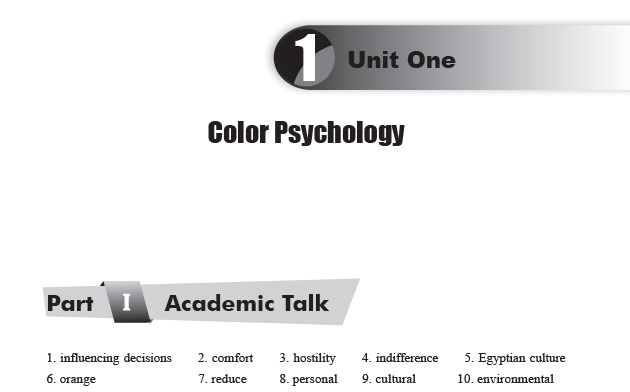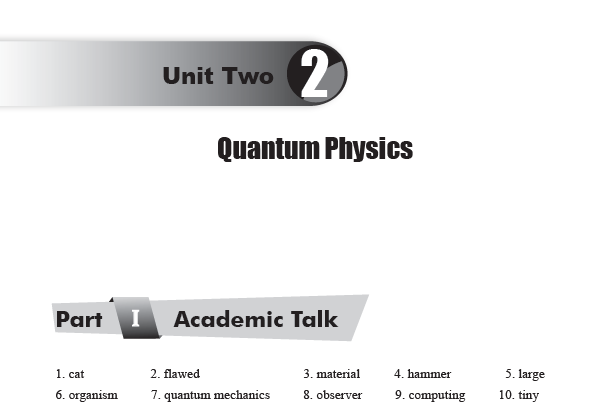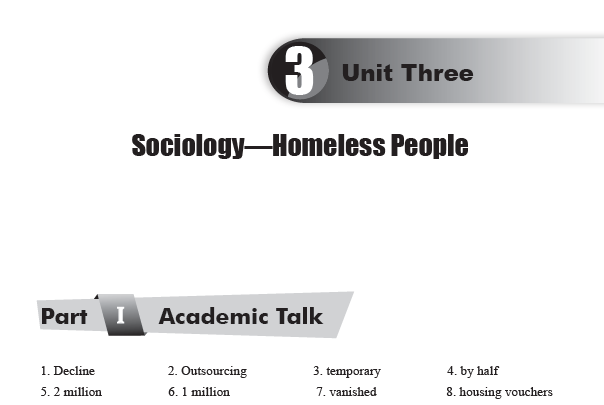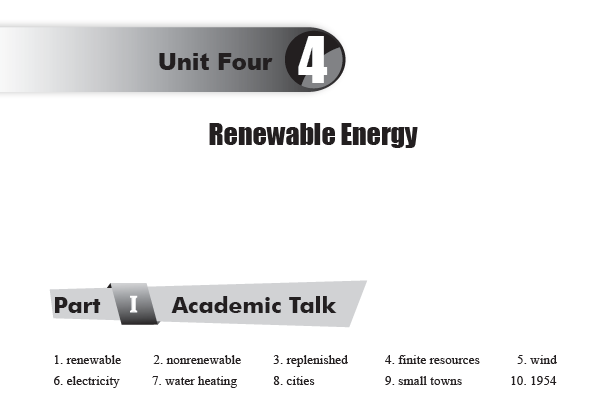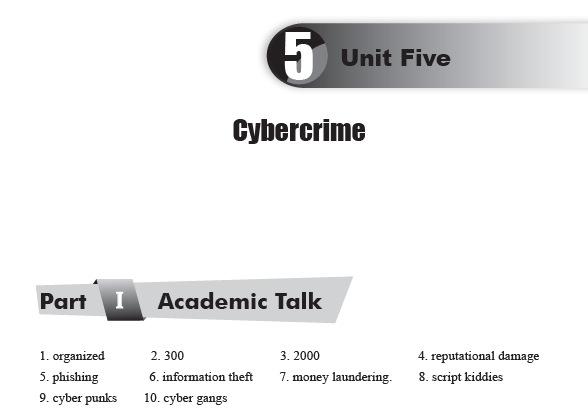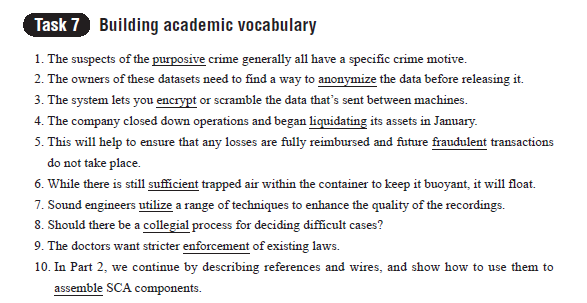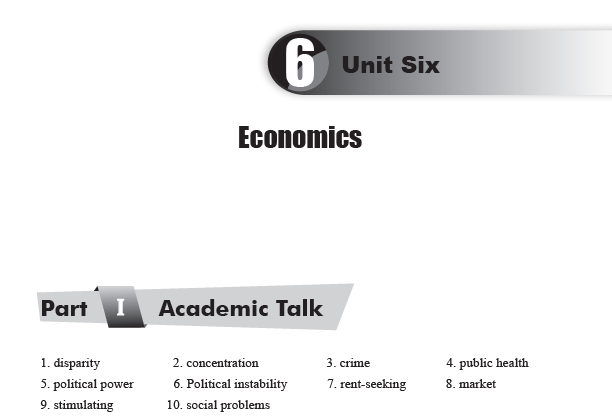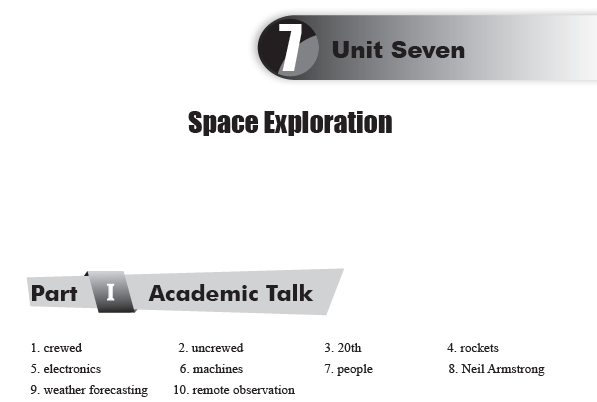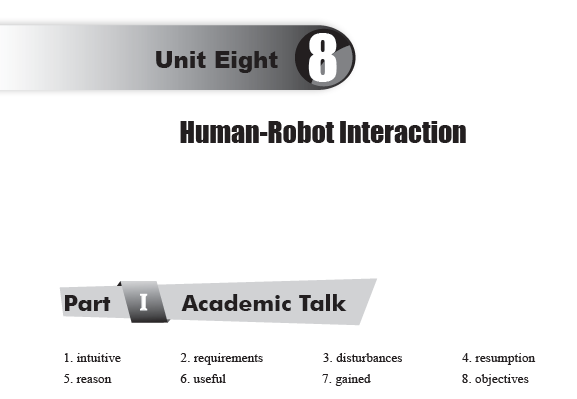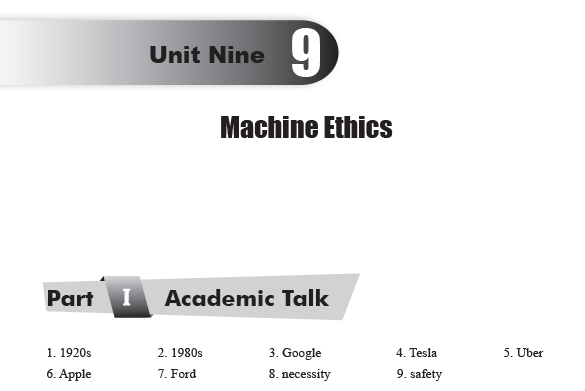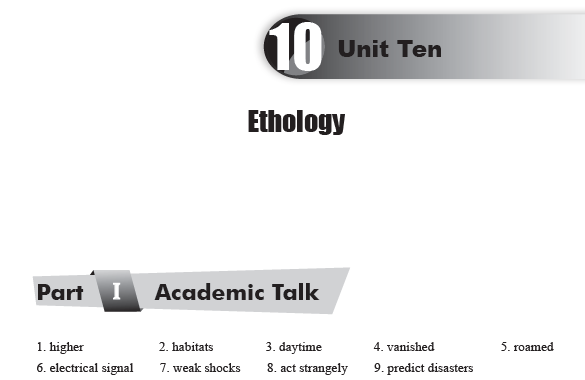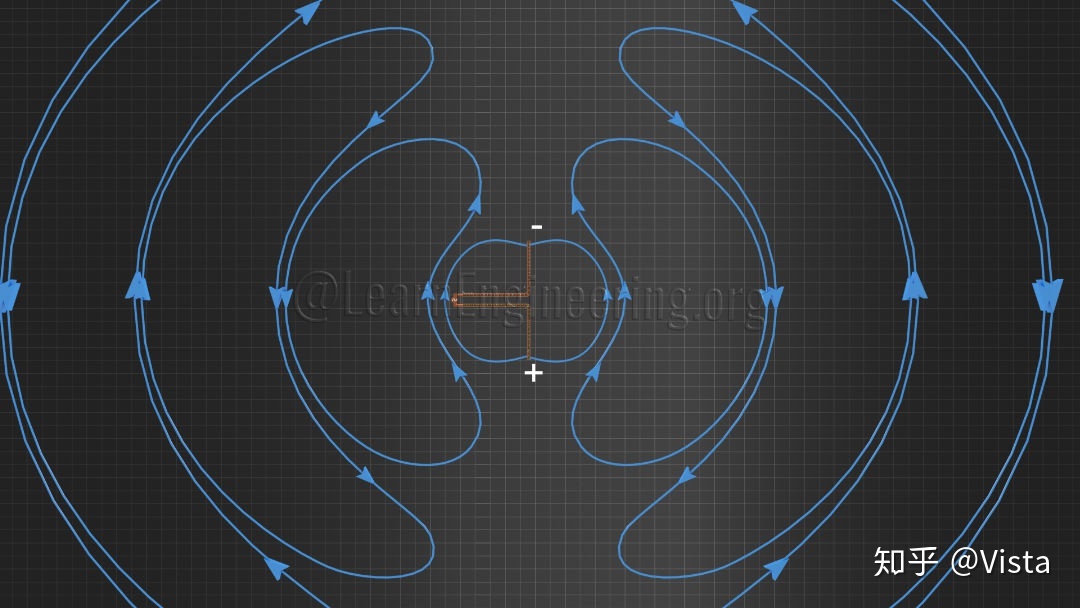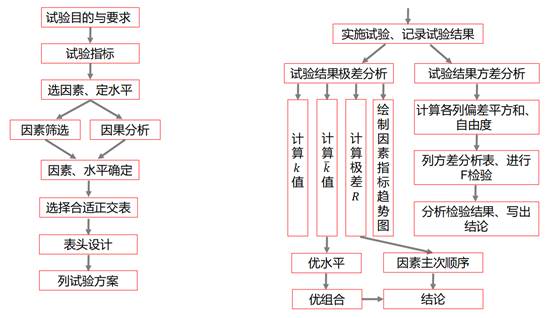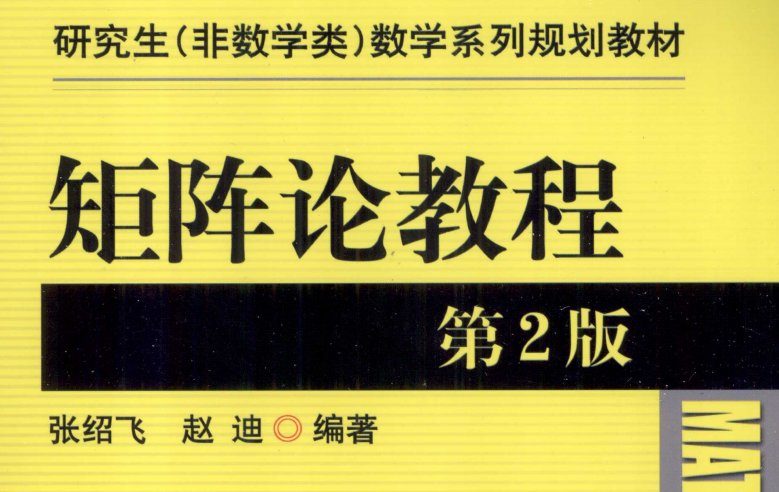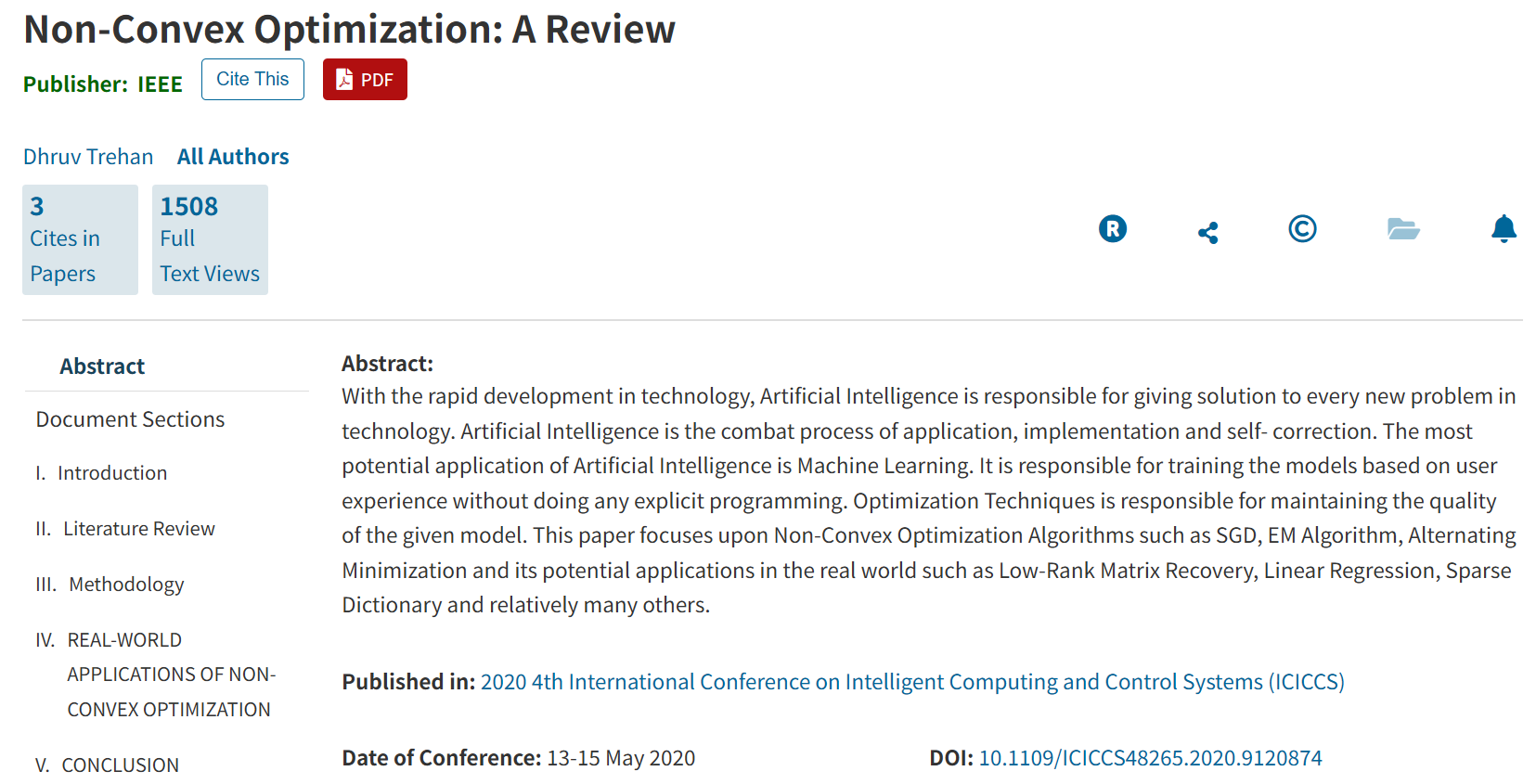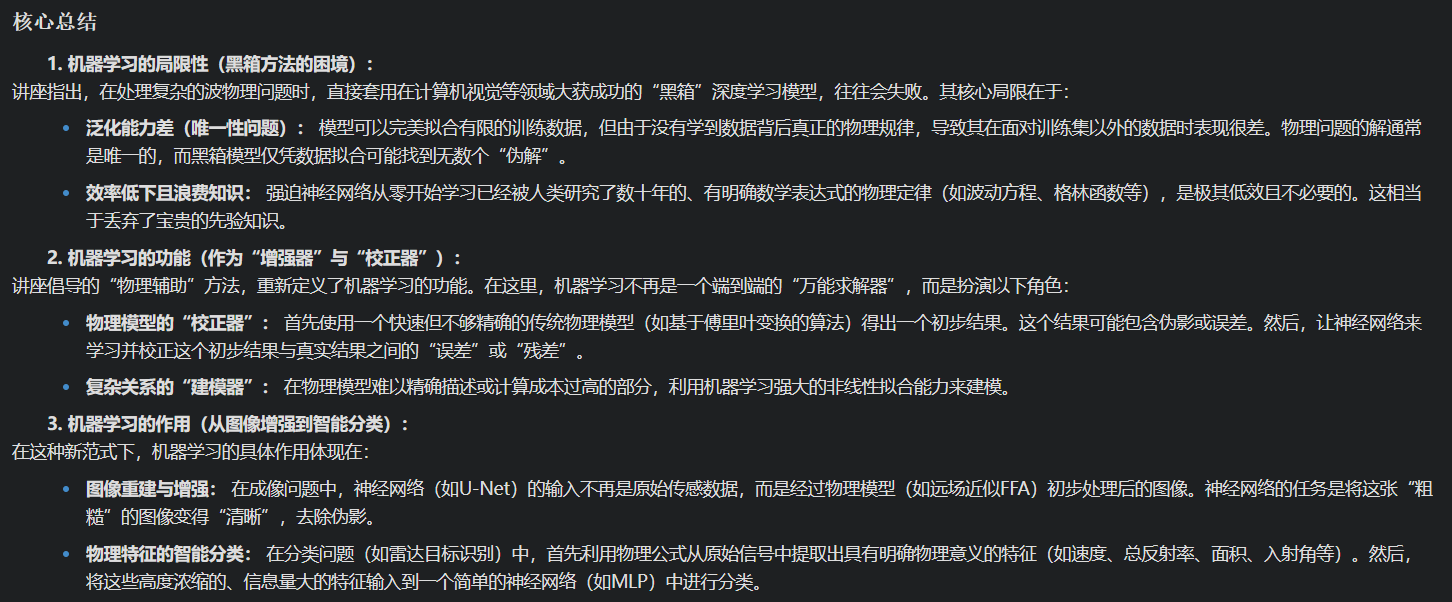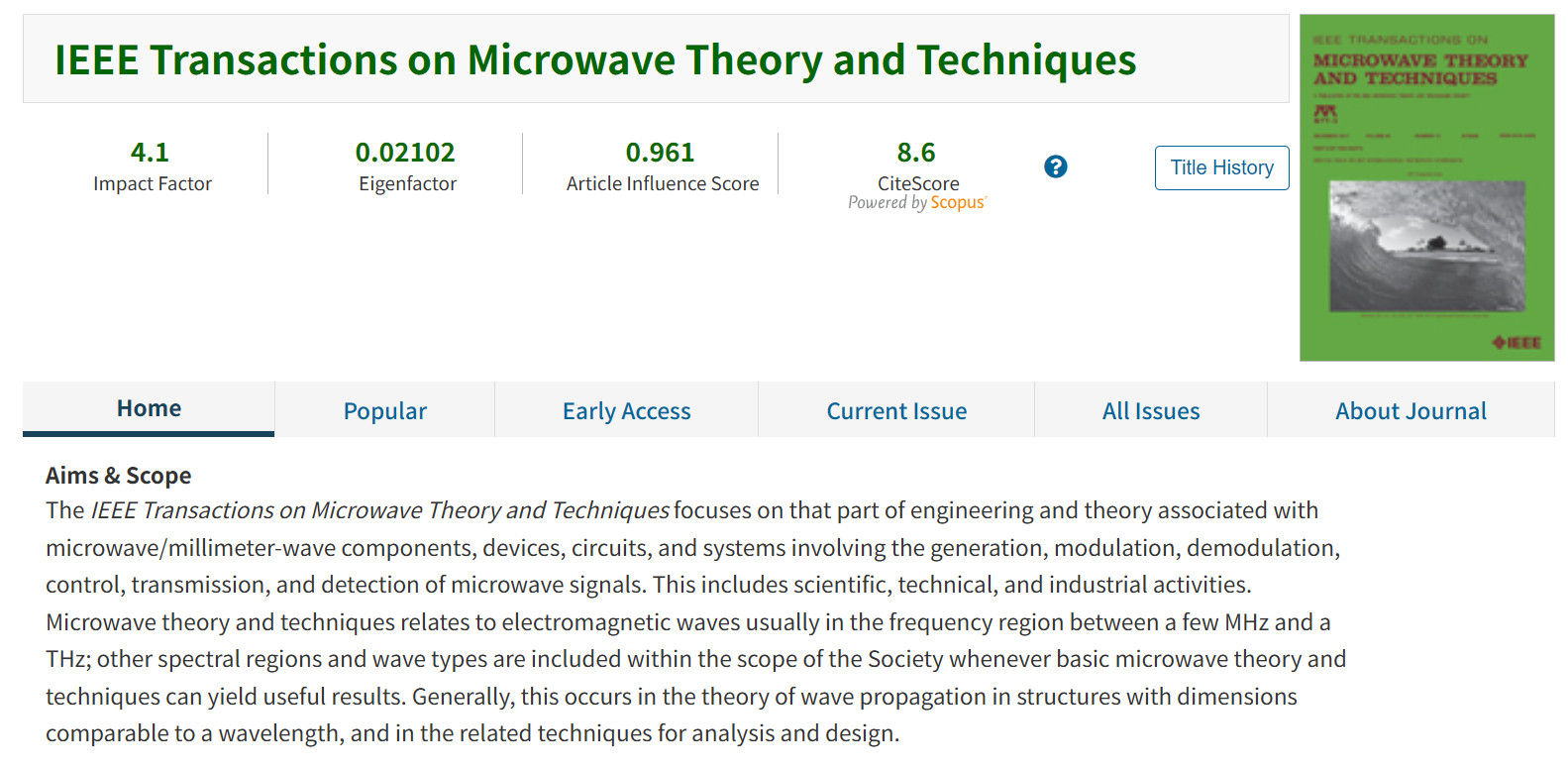《硕士英语》
Assignment
Assignment 15
Date: Jan. 2/8, 2024
Task
Analyze the move structure of the major sections (IMRD/C) of one research article in your own field. You may do this task on a PDF file or a word file, and submit it as an independent file. (本次作业不需要跟之前的作业放在一个word文档里,要单独提交。文件命名格式同前。)
I analyzed an article published in the electronic information field on IEEE, titled A Recognition Method of OAM based on Diffraction Neural Network. This paper proposes a recognition method for orbital angular momentum (OAM) based on a diffraction neural network. Simulations were conducted using CST software, and promising results were achieved.
First, the sections research articles usually have Abstract, Introduction, Methods, Results, Discussion. That is usually summarized as “A-IMRD”. In this paper, it combines the sections of Abstract, Introduction, Methods, Results, and Discussion into a single section.
Abstract—Orbital angular momentum has attracted a lot of attention due to its potential to increase communication capacity. However, the recognition of orbital angular momentum has always been a difficult problem. This paper proposes an orbital angular momentum recognition method based on diffraction neural network, and the simulation is done with CST software. The good results were obtained.
Keywords—OAM, D2NN, Communication
Introduction to abstract: Orbital angular momentum (OAM) has garnered significant attention for its potential to enhance communication capacity. Despite its promising applications, the recognition of OAM has posed persistent challenges. In addressing this issue, the present paper introduces a novel method for recognizing orbital angular momentum, utilizing a diffraction neural network. The proposed method is subsequently validated through simulation using CST software.
The abstract maintains clarity by explicitly stating the significance of OAM, the existing challenge in its recognition, and the proposed solution using a diffraction neural network. The abstract is informative, conveying essential details about the methodology and concluding with the positive outcome of the study. The abstract avoids unnecessary details and focuses on specific aspects.
The abstract exhibits cohesion by establishing a logical flow of information. It begins by introducing the relevance of OAM in communication and seamlessly transitions to the identified recognition challenge. The proposed solution is then presented, and the abstract concludes with the positive results obtained through simulation. This cohesive structure ensures that each sentence contributes to the overall coherence of the abstract, presenting a unified and well-organized summary of the research.
I. INTRODUCTION
At present, all wireless communications based on electromagnetic waves are based on the propagation of plane waves, and spectrum resources are limited, and it is critical to improve channel capacity and frequency resource utilization. The vortex electromagnetic wave carrying OAM provides a new exploration direction for solving this problem. Under the same frequency, using different modes to modulate different signals can greatly improve the channel capacity and spectrum utilization.
Diffraction deep neural network is an all-optical deep learning framework that combines the back-propagation algorithm in deep learning with the Huygens-Fresnel principle in electromagnetics. At present, the diffraction neural network has been used in many applications. In 2018, Xin Lin, the creator of this concept, first used the diffraction neural network for image classification, and achieved a test accuracy of 91.75% through a 5-layer network[1]. Scholars use diffractive neural networks in holographic imaging[2], pulse shaping[3], and signal demultiplexing[4].
The emergence of diffractive neural networks greatly simplifies the design of metamaterial lenses, allowing metamaterial lenses to be applied to more complex scenes.
At present, the detection of OAM mode has problems such as complex system and low efficiency. Most of them require two or more special surface optical devices, and they need to be accurately aligned at a specific distance. This paper proposes a way to identify OAM based on diffraction neural network, which works at 140Ghz. The way greatly simplifies the recognition system of OAM, and improves the efficiency of OAM pattern recognition. This method has great potential to be applied in wireless communication systems based on orbital angular momentum.
Introduction to Present Research: The paragraph begins by introducing the current state of wireless communications, specifically mentioning the reliance on electromagnetic waves and the limitations posed by spectrum resources. It highlights the need to improve channel capacity and frequency resource utilization, setting the stage for the research problem.
Rationale behind the Research: The introduction provides the rationale for the research by introducing the concept of vortex electromagnetic waves carrying Orbital Angular Momentum (OAM). It explains how using different modes to modulate signals under the same frequency can significantly enhance channel capacity and spectrum utilization. The paragraph makes it clear that the aim is to address current limitations in wireless communication and propose a new exploration direction using OAM.
Professional Acceptance and Recognition: The introduction goes on to discuss the Diffraction Deep Neural Network, a key technology in the research. It explains that this network combines deep learning algorithms with principles in electromagnetics, illustrating the interdisciplinary nature of the study. Examples of applications of the diffraction neural network in various fields are provided, establishing the credibility and relevance of the technology. The paragraph highlights the potential impact on the design of metamaterial lenses, indicating the broader implications and contributions of the research.
Proposal and Contribution: The paragraph concludes by identifying a specific problem related to the detection of OAM modes in wireless communication systems. It proposes a solution using a diffraction neural network at 140 GHz, aiming to simplify the OAM recognition system and improve its efficiency. The potential application of this method in wireless communication systems based on orbital angular momentum is emphasized, indicating the broader contribution to the field.
This introduction effectively sets the context for the research, justifies its importance, establishes the relevance of the technology used, and outlines the specific problem the research aims to solve, along with its potential contributions to the field of wireless communications.
II. METHODOLOGY
Convert the vortex electromagnetic waves carrying different modes of OAM and the corresponding focus positions into a matrix, and put it in the diffraction neural network to obtain the phase distribution of the topological charge identification metamaterial lens, and change the transmission phase of the unit by adjusting the height of the unit according to this phase distribution. When electromagnetic waves carrying different modes of OAM are incident on the metamaterial lens, they will be focused to different positions, playing the role of topological charge identification. This design is mainly based on python3.7+torch1.7.0, HFSS and CST simulation software.
Introduce the backpropagation algorithm into the scalar diffraction theory to build a diffraction neural network. The forward propagation model is constructed according to the Rayleigh-Sommerfeld diffraction formula[1]:
where represent the distance between a point on the metamaterial lens and a point on the imaging surface and the represents the wavelength of the incident wave. The back propagation function is as follow[2]:
The operating frequency of 140Ghz is brought into the formula. The number of units is 61*61, and the distance between the imaging surface and the metamaterial lens is set to 40 mm.
To identify the vortex electromagnetic waves with four modes of L=0, L=1, L=2, and L=3, we respectively focus the vortex electromagnetic waves of four different modes to four different points. First, encode the vortex electromagnetic waves of the four modes into the input matrix according to their wavefront phase distribution, and then write the output matrix according to the difference of the focus position. The focus point is 1 and the other positions are 0. The input matrix and the output matrix are corresponded as the training data set.
Overview of the Methodology: The paragraph begins by describing the process of converting vortex electromagnetic waves with different modes of Orbital Angular Momentum (OAM) into a matrix. The matrix is then input into a diffraction neural network to obtain the phase distribution of the topological charge identification metamaterial lens. Adjustment of the unit’s transmission phase is achieved by modifying the unit’s height based on the obtained phase distribution.
Software and Tools Used: The design is primarily based on Python, HFSS, and CST simulation software.
Integration of Backpropagation Algorithm: The backpropagation algorithm is introduced into scalar diffraction theory to construct a diffraction neural network. The forward propagation model is built using the Rayleigh-Sommerfeld diffraction formula.
Parameter Settings: The operating frequency, the number of units in the diffraction neural network, the distance between the imaging surface and the metamaterial lens.
The paragraph outlines a comprehensive approach that involves the use of specific software tools, the integration of neural network techniques, and the application of backpropagation for training. The focus is on the design and implementation of a metamaterial lens capable of identifying topological charge based on the OAM modes of incident electromagnetic waves.
III. RESULT AND DISCUSSION
Put the training data set into the diffraction neural network to train and use the Adam optimizer to optimize. The learning rate is set to 0.01 and the number of iterations is set to 70. The loss function decline curve and the iteration results are shown in Fig.1 and Fig.2. The phase distribution is shown in Fig.3.
Use the square dielectric post as the transmission unit, whose width is a=1mm. The dielectric constant and loss tangent of the material are 2.5 and 0.02 respectively. We adjust the unit to ensure that the height of the unit is changed to cover the phase range of 2π, So the corresponding relationship between different height and phase is shown in Fig.5.The advantage of this is that the unit structure does not need to be changed, only the height of the unit can be adjusted. Compared with many arrays that need to change the unit structure, it is very conducive to the construction of the overall array and greatly simplifies the difficulty of the array structure.
According to the phase distribution optimized in Fig.3 and the corresponding relationship between different height and phase in Fig.5, we adjust the height of the unit at different coordinates to finally obtain the required array. The vortex electromagnetic waves carrying different modes of OAM are irradiated to the lens respectively, and the simulation is performed in the CST. The simulation results are shown in Fig.6
It can be seen from Fig.1 that the loss function has basically become stable. According to the comparison between Fig.2 and Fig.6, it can be seen that the simulation effect is high similar to the iterative effect.
Training and Optimization Process: The paragraph starts by explaining the methodology used for training the diffraction neural network. It mentions the use of the Adam optimizer. The loss function decline curve and iteration results are visualized in Fig.1 and Fig.2, demonstrating the stability of the loss function over time.
Phase Distribution and Unit Structure: Fig.3 illustrates the phase distribution. It appears that a square dielectric post with specified dimensions and material properties is used as the transmission unit.
Array Construction and Simulation: The paragraph explains how, based on the optimized phase distribution and height-phase relationship, the unit’s height is adjusted at different coordinates to obtain the required array. Vortex electromagnetic waves carrying different modes of Orbital Angular Momentum (OAM) are irradiated to the lens, and simulations are conducted in the CST software. Fig.6 presents the simulation results, showing the effects of adjusting the unit’s height on the electromagnetic waves.
Discussion on Results: The paragraph concludes by discussing the stability of the loss function and the similarity between the simulation results and the iteration results. This comparison suggests a high simulation accuracy.
In summary, this paragraph effectively combines elements from the Results and Discussion sections. It provides a detailed account of the experimental setup, training process, and simulation outcomes related to diffraction neural networks and electromagnetic wave manipulation. Visual aids, such as figures, are utilized to enhance the presentation and understanding of the results.
IV. CONCLUSION
In conclusion, a recognition method of OAM based on D2NN is first proposed. The required phase distribution of lens is trained by artificial intelligence methods. The simulation results show that the proposed lens can achieve the effect of OAM recognition on a preset plane. The lens can be fabricated by a 3D printer and be applied to the field of wireless communications. Furthermore, this design way based on D2NN can solve many problems in electromagnetic field and optical field.
The passage begins by emphasizing the primary contribution of the paper, introducing a novel OAM recognition method based on D2NN. This statement clearly indicates the paper’s innovativeness and uniqueness. The paper employs artificial intelligence methods to train the required phase distribution of the lens, emphasizing the study’s modernity and the application of advanced technology. This also indicates the author’s sensitivity to technological trends and methods. The conclusion mentions simulation results, indicating that the proposed lens can achieve OAM recognition on a predefined plane. This statement supports the practical effectiveness of the research and provides readers with a qualitative assessment of the experimental results.
The conclusion points out that the proposed lens can be manufactured using 3D printing technology and applied in the field of wireless communications. This offers a potential solution for practical applications, emphasizing the utility and feasibility of the research. The design approach based on D2NN can address multiple challenges in the electromagnetic and optical fields. This statement underscores the universality of the proposed method and its potential applications in different domains, providing readers with directions for further contemplation.
In summary, this conclusion provides a clear and comprehensive summary, emphasizing the uniqueness of the research, its practical applications, and widespread applicability. After perusing this conclusion, should have gained a deeper understanding of the paper’s main contributions and value, potentially sparking further interest in exploring or applying this methodology.
Assignment 13
Date: Dec. 25, 2023
Task 1 Watch 3MT “Astrocyte – the Star of Motor Neuron Disease”, and fill in the outline below.
Introduction:
Hook**:** The opening quote from Gordon Akman, diagnosed with motor neuron disease (MND) at age 29, immediately captures attention by expressing the urgency and severity of the condition.
Importance of topic**:** The narrative highlights the devastating nature of MND, contrasting it with Stephen Hawking’s longevity with the disease, and emphasizes the rapid decline experienced by the majority of MND patients within five years of diagnosis.
Research gap**:** Since the first description of MND in 1869, the absence of a cure is attributed to the historical neglect of neighboring cells, particularly astrocytes, surrounding motor neurons. This identifies a significant research gap in understanding the role of astrocytes in MND.
Research purpose**:** The speaker’s Ph.D. focuses on investigating the impact of the most common genetic cause of MND on motor neurons using a human stem cell technique. The goal is to understand how mutant astrocytes, akin to the soil for motor neurons, contribute to the disease progression.
Methods: The speaker employs a human stem cell technique to create astrocytes from both healthy individuals and MND patients with the genetic mutation. The research finds that mutant astrocytes exhibit a faster rate of deterioration, suggesting their diminished health.
Results: The study divides healthy motor neurons into two groups, cultured with normal and mutant astrocytes, revealing that motor neurons in the latter group are smaller and less functional. This groundbreaking result establishes a link between mutant astrocytes and adverse effects on motor neuron functions, contributing to patient symptoms.
Contribution/value/application of research: The speaker underscores the significance of the findings, asserting that for the first time, there is evidence showing that mutant astrocytes can negatively impact motor neuron functions, which are crucial for understanding patient symptoms. The research aims to uncover the cause of this adverse effect and explore potential interventions to modify the environment in which motor neurons exist, with the ultimate goal of slowing, stopping, or even reversing the progression of motor neuron disease.
Task 2 Improve your 3MT script based on comments and suggestions from your group members, and prepare to deliver your presentation next class.
Good morning, everyone!
Do you know who he is? He’s a YouTuber named hetongxue, majoring in electronic communication engineering. In one of TV show, he did something quite interesting to improve his phone signal. He pointed all the antennas of his router directly at his phone. This move led to him being laughed at. But do you know why? How should the antennas of a router be positioned?
The antennas of routers are typically designed as half-wave antennas, and they are the most commonly used types. They can send and receive electromagnetic waves to communicate with phones. Due to the antenna’s structure, it emitted varying electromagnetic wave strength in different directions. The figure shows the electric field strength of the antenna in different directions. From this figure, we know that the antenna’s electromagnetic field is concentrated on the sides, with minimal strength at the ends. So, when the router is pointed towards the phone, the signal received by the phone is minimized. The antennas of the router should be vertically positioned. From this, we know the importance of antenna characteristic measurement.
This is the simplest type of antenna that can be analyzed using mathematical. However, for more complex antennas or when there are other objects in space, calculations will become much more difficulty. After years of research, we’ve found that as long as we know the amplitude and phase of a plane in space, we can calculate the electromagnetic field at any position. Therefore, our problem becomes getting the amplitude and phase of a plane.
In reality, measuring the amplitude of the electric field is easy, while measuring the phase is hard. So, my task is using the amplitude of one plane to calculate the phase of another. But this calculation process is challenging. So, I use machine learning to solve this problem.
Typically, machine learning needs lots of training. However, my innovative model use a physical model of electromagnetic wave propagation, so the model don’t need pre-training.
Below are the results of my program. As you can see, with an increasing number of learning iterations, the recovered result becomes increasingly close to the actual measured values.
That’s all! Thank you.
Assignment 12
Date: Dec. 18, 2023
Task 1 Watch 3MT “Objective measurement of pain”, and fill in the outline below.
Introduction:
Hook**:** The introduction sparks interest by mentioning the speaker and the topic of objective pain measurement. It uses a quote from Peter Drucker to emphasize the importance of measurement.
Importance of topic**:** The paragraph underscores the significance of the topic by questioning how pain, a subjective experience, has been managed without objective measurement for centuries. It highlights the widespread impact of pain on billions of people.
Research gap**:** A research gap is identified by contrasting the historical ability to objectively measure various properties with the absence of such measurements for pain, creating a need for addressing this gap.
Research purpose**:** The research purpose is clearly stated as using the autonomic nervous system, specifically pupil size and blood flow, to objectively measure pain. This links the research to a specific approach for objective pain measurement.
Methods: Methods involve a custom-built device, the “s-thisometer,” to deliver controlled pain to the eyes, measuring pupil size and blood flow to create a pain index.
Results: While specific results aren’t provided, the mention of a “pain index” implies an attempt to quantify pain objectively by combining pupil size and blood flow characteristics.
Contribution/value/application of research: The paragraph concludes by envisioning a world where objective pain measurement leads to improved pain management, especially for those who struggle to communicate their pain verbally. It implies a tangible benefit from the research’s application.
Task 2 Read “How to make a 3MT presentation”, write your own 3MT script here, print it out and bring it to class next week.
Ladies and gentlemen, good morning!
Do you know who he is? He’s a YouTuber named 老师好我叫何同学, majoring in Electronic Information at Beijing University of Posts and Telecommunications. In one of his videos, he did something quite amusing to improve his phone signal – he pointed all the antennas of his router directly at his phone. This move led to him being mocked online for quite some time. But do you know why? How should the antennas of a router be positioned?
These antennas are called half wave antennas, one of the most commonly used types. They can send and receive electromagnetic waves to communicate with devices like phones. Due to the antenna’s structure, the strength of electromagnetic waves emitted in different directions varies. The radiation pattern, shown in the graph below, indicates that the antenna’s electromagnetic field is concentrated on the sides, with minimal strength at the ends. So, when the router is pointed towards the phone, the signal received by the phone is minimized. The antennas of the router should be vertically positioned.
This is the simplest type of antenna that can be analyzed using mathematical tools. However, for more complex antennas or when there are other objects in space, calculations become much more complicated. After years of research on electromagnetic waves, we’ve found that as long as we know the phase and amplitude of a plane in space, we can calculate the electromagnetic field at any position. Therefore, our problem becomes obtaining the phase and amplitude of a plane.
In reality, measuring the amplitude of the electric field is straightforward, while measuring the phase is still a developing technology. So, my current task is to use the amplitude of one plane to calculate the phase of another. The physical process of electromagnetic wave propagation from one plane to another is simple, but the calculations are intricate. That’s why I’ve employed machine learning to assist me in solving this problem.
Typically, machine learning requires extensive training. However, my innovative model incorporates a physical model of electromagnetic wave propagation, eliminating the need for pre-training. It only requires the amplitude of one plane for iterative learning and is adaptable to various scenarios.
Below are the results of my program. As you can see, with an increase in the number of learning iterations, the recovered electromagnetic field becomes increasingly close to the actual measured values. This technology successfully integrates machine learning with electromagnetic field phase recovery.
That’s all! Thank you.
Assignment 11
Date: Dec. 11, 2023
Task 1 Do the assignment for unit 10 on the study platform. You may take notes below.
Ø seismic adj. 地震的;由地震引起的;震撼世界的
Ø collectively adv. 全体地,共同地
Ø yield v. 产生;屈服,让步;放弃;让路 n. 收益;产量
Ø mechanism n. [生]机制,机能,[乐]机理;(机械)结构,机械装置[作用],(故事的)结构;[艺]手法,技巧,途径;机械作用
Ø temporary adj. 短暂的
Ø detect v. 发现;查明;测出
Ø anticipatory adj. 期待着的;提早发生的
Ø magnitude n. 巨大,广大;重大,重要;量级;(地震)级数
Ø empirical adj. 经验主义的;以经验(或实验)为依据的
Ø unusual adj. 特别的,不寻常的;独特的,别致的
Ø statistically adv. 统计上地,统计地
Ø correlate v. (使)互相关联
Ø subsequent adj. 后来的;随后的;作为结果而发生的;附随的
Ø deploy v. 部署,调集;有效利用
Ø increase v. 增加,增长 n. 增加,增长
The article discusses the phenomenon of abnormal animal behavior observed before natural disasters and explores the question of whether animals can sense impending calamities. Examples include the 2004 tsunami in Indonesia, where elephants moved to higher ground, flamingos and wild boars fled their habitats, and bats were active during the day. Similar reports emerged before the Sichuan earthquake in China, with toads roaming the streets and zoo animals displaying peculiar behavior. Seismologist Roger Musson suggests that animals may perceive electrical signals generated by underground rock movements before earthquakes, or they could sense weak shocks undetectable by humans. However, despite anecdotal evidence, a reliable method for using animal behavior as an early warning sign has not been developed. The article points out that various factors can cause animals to act strangely, making it challenging to distinguish predictive behavior from random occurrences. While some countries have explored using nature’s signals for disaster prediction, experts emphasize the need for a more systematic and reliable approach.
Task 2 Watch Units 7 and 8 “RA Results/Discussion” of “学术英语:研究论文写作与演讲” (https://www.xuetangx.com/course/buaa05021010476/18605237), and take notes below. (Exercises are optional)
Unit 7 of the lecture series focuses on unraveling the complexities of the results section in academic research papers. The discussion covers three essential aspects: introduction to the results, language features for effective presentation, and the integration of visuals for better understanding. While acknowledging the perceived difficulty in writing the results section, the teacher clarifies its theoretically straightforward nature as a direct account of observed findings. Notably, the lecture emphasizes that results sections may not always stand alone, presenting four possible organizational structures. The audience is guided through the nuanced process of presenting data, with a distinction between results and discussion sections. Unusual correlations find a place in the results section, while speculations and explanations belong to the subsequent discussion. The importance of discretion in data presentation is underscored, advocating for showcasing only key results relevant to research questions and excluding irrelevant details. Four key moves are outlined for crafting a results section: starting with introductory information, objectively presenting results, optionally adding comments, and concluding with a succinct summary.
Practical insights are provided through the analysis of a sample results section from Unit 8, showcasing how each sentence contributes to different aspects of the section. In conclusion, the lecture imparts a comprehensive understanding of the results section, encouraging critical analysis of research articles from diverse disciplines. The upcoming discussion on language features in the results is teased, promising a continued exploration of academic writing intricacies.Teacher introduces the topic of the discussion section in academic English research papers. The discussion section is compared to the results section, and the variations in how different papers structure their discussion, results, and conclusion sections are highlighted. Teacher emphasizes the importance of the discussion section in answering research questions, summarizing results, and connecting the current research to existing knowledge. The structure of the discussion section is explained, including six moves: revisiting research purpose and methodology, revisiting key results, commenting on key results, stating contributions or implications, addressing limitations, and making recommendations for future research. The move structure is illustrated by analyzing sentences from a sample discussion section, emphasizing how each sentence contributes to revisiting the study’s purpose, presenting major findings, summarizing key results, commenting on results, and providing explanations and evaluations.
Task 3 Talking preparation: use simple language (avoid using technical terms) to share your own research with your partner in 3 minutes, making sure they understand it. Write the outline of your talk here.
Topic: Exploring Electromagnetic Fields in Everyday Environments
Importance of topic: Electromagnetic fields surround us, generated by various devices. Understanding their presence and impact is crucial for our well-being and technological development.
Research gap: While electromagnetic fields are known, comprehensive studies on their presence in everyday spaces, their variations, and potential effects on health are limited.
Research purpose: Investigate the electromagnetic field landscape in common environments to identify sources and variations. Understand the potential impact of prolonged exposure to electromagnetic fields on human health and electronic devices.
Methods: To achieve our goals, we employ portable measurement devices, conducting on-site measurements in homes, workplaces, and public spaces.
Results: Anticipated outcomes include comprehensive maps detailing the distribution of electromagnetic fields, insights into exposure levels in various settings, and potential correlations between exposure and health concerns. These results aim to provide a nuanced understanding of the invisible forces shaping our daily environments.
Contribution/value/application of research: Our findings will contribute to the development of guidelines for creating safer electronic devices and environments. By engaging in ongoing discussions, we hope to influence regulations and optimize electromagnetic field exposure for the benefit of society.
Assignment 10
Date: Dec. 4, 2023
Task 1 Do the assignment for unit 9 on the study platform. You may take notes below.
Ø guarantee v. 担保;提供(产品)保修单;确保;承诺对…负法律责任
n. 保证;保修单;起保证的事物;担保金
Ø autonomous adj. 自治的;独立自主的;有主见的
Ø tackle n. 用具,装备;索具;阻挡;阻截队员vt. 着手处理;[橄榄球]擒住并摔 倒(一名对方球员);给(马)配上挽具;处理vi. 擒住并摔倒一名对手
Ø depict v. 描绘,描画;描述
Ø assume v. 假设,认为;承担(责任);获得(权利);呈现;假装
Ø allocate v. 分配,分派;划拨
Ø insight n. 洞察力;领悟;了解
Ø encompass vt. 围绕,包围;包含或包括某事物;完成
Ø perceive v. 意识到;察觉,发觉;理解
Ø robust adj. 强健的;结实的;强劲的;坚定的
Driver-less cars, once a concept rooted in science fiction, have become a tangible reality in recent years. The journey toward autonomous vehicles began in the 1920s, with successful prototypes emerging in the 1980s, notably from Mercedes-Benz. Today, numerous companies, including Uber, Apple, Ford, Google, and Tesla, are actively involved in developing and deploying driver-less cars. The potential benefits of driver-less cars include improved road safety, reduced insurance costs, and enhanced mobility for individuals with disabilities or health issues. Proponents argue that vehicular autonomy could significantly increase road capacity by 200 to 400 percent. However, concerns linger about the safety and perfection of the technology. Google’s self-driving car, launched in 2012, experienced 14 minor accidents, while Tesla’s Autopilot system resulted in a fatality in 2015. Achieving perfection in autonomous driving technology remains elusive. Despite current challenges, further development in the field is inevitable. George Marcus, co-founder of Geometric Intelligence (Uber’s autonomous development department), envisions a future with flying cars, capable of enabling high-speed commutes to alleviate traffic congestion. The prospect of a world where long commutes become practical through advanced autonomous technology seems plausible in the not-too-distant future.
Task 2 Read the LR section in one of the RAs in your own research field (could be part of Introduction or as an independent part), analyze its move structure and language features (e.g. frequently used sentence patterns for different moves, citation methods, tenses, etc.), and summarize your findings here.
Recently, deep learning (DL) has shown great potential for solving inverse problems in computational imaging(CI). Pioneering studies have demonstrated the applicability of DL in optical tomography, computational ghost imaging, digital holography, imaging through scattering media8-10, fluorescence lifetime imaging imaging under low-light conditions phase imaging unwrapping, and fringe analysis. Generally, an artificial neural network used in CI requires a large set of labeled data to optimize its weight and bias parameters training) so that it can represent a universal function that maps the data in the object space into the image space~Depending on the network architecture and the a mount of data used for training, the network training process can take several hours or even several days, although there construction process is very quick in most cases. Thus.the acquisition of a sufficiently large set of training data is crucial for the training of a good neural network. However, in many applications, one is usually required to image something that has never been seen before. It is thus impossible to acquire sufficient ground-truth images for network training, resulting in limited generalizationability918
We demonstrate in this letter that it is possible to experimentally recover an image with an untrained neural network that is built by combining a conventional artificial network such as U-Net’9 with a real-world physical model that represents the image formation physics; we call the resulting model PhysenNet Thus, one does not need thousands of labeled data to train PhysenNet before it can be used. Instead, one needs only to feed a single image to be processed into a PhysenNet model with a suitable handcrafted structure, and the network weight and bias factors will be optimized through the interplay between the neural network and the physical model eventually resulting in a feasible solution that satisfies the physical constraints. The idea of enforcing imposed implicit priors by means of the handcrafted network structure in PhysenNet is inspired by the concept of the deep image prior (DIP)20. We note that the DIP alone has been used in some CI applications20-23, but all these studies have been largely limited to simulations. The incorporation of the DIP with a task-specific physical model for optical imaging and its demonstration for coherent imaging experiments are the main contributions of this work. Here, we take phase imaging as a typical example to explain the principle more explicitly.
The LR section follows a logical move structure, introducing the research field, discussing previous studies, highlighting challenges, proposing a novel approach (PhysenNet), and summarizing the main contributions of the work. The language is technical, formal, and precise, using specific terms related to deep learning and computational imaging.
Task 3 Free talking preparation: read or watch some English materials (books, newspaper, magazines, movies, etc.) you are interested in, and prepare a 2-minute talk to share with your partner what you have read or watched. Write the outline of your talk here.
Topic: Microwave antennas are the unsung heroes behind the seamless wireless connectivity we enjoy today.
Main idea: Microwave Antennas - Unveiling the Wonders of Wireless Communication
Supporting ideas:
- Seamless Wireless Connectivity: Microwave antennas play a pivotal role in establishing reliable and high-speed wireless communication networks.
- Advanced Beamforming Technology: The functionality of directing signals precisely enhances the efficiency and reliability of data transmission.
- Microwave Antennas in Satellite Communication: Explore the vital role these antennas play in satellite communication, enabling global connectivity and information exchange.
Conclusion: From local networks to global satellite communication, their advanced technology ensures efficient data transmission. Dive into the world of microwave antennas and unlock the wonders of modern wireless communication.
Today, I invite you to explore the fascinating realm of Microwave Antennas, the unsung heroes behind our seamless wireless connectivity. In a world where communication is key, these antennas serve as the invisible architects, ensuring that our devices can effortlessly exchange information. Through advanced beamforming technology, they enhance the efficiency and reliability of data transmission, creating a symphony of seamless communication. Furthermore, in the realm of satellite communication, microwave antennas play a pivotal role, connecting us globally and making the world a more interconnected place. As we unravel the intricacies of these antennas, we discover the wonders that power our modern, interconnected world. Thank you.
**
**
Assignment 9
Date: Nov. 27, 2023
Task 1 Do the assignment for unit 8 on the study platform. You may take notes below. √
Ø address n. 地址,位置;网址;演说 v. 写(收信人)姓名地址;解决,处理; 演讲;向…说话;称呼
Ø facilitate v. 促进;使便利
Ø arguably adv. 可论证地;可以说;按理说
Ø implement vt. 实施,执行;使生效,实现;落实(政策);把…填满 n. 工具, 器械;家具;手段;[法]履行(契约等)
Ø denote v. 预示,表明;意指,指代
Ø a priori adj.& adv. 从事实推断结果;由因及果
Ø desirable adj. 令人满意的;值得拥有的;可取的;性感的
Ø versatile adj. (指工具、机器等)多用途的;多才多艺的;有多种学问、技能 或职业的;多功能的
Ø erratic adj. 飘忽不定的;行为古怪,反复无常;(运动或行为)不规则的 n. 古 怪的人;[地]漂砾
Ø yield v. 产生;屈服,让步;放弃;让路 n. 收益;产量
The central idea of the passage is that humans engage in physical interactions every day as an intuitive way to convey information about personal preferences and task execution. Despite this, current robots lack seamless physical interaction with humans due to challenges such as the need for lightweight designs, reliable sensors, and predictive control schemes. The passage highlights a gap in how robots interpret physical interventions, noting that existing algorithms treat them as disturbances rather than valuable information. The argument proposes that robots should treat human interaction as useful information for task execution, emphasizing the need to learn objectives from these interactions. The passage introduces the formalization of reacting to physical interaction as an objective or reward learning problem, presenting a solution that allows robots to adapt their behaviors during tasks based on information gained from interactions. However, the work is acknowledged as a preliminary step, and open questions remain, including handling dynamic aspects and generalizing learned objectives to new tasks.
Task 2 Read the Introduction section in one of the RAs in your own research field, analyze its move structure and draw a circular figure to show its topic development. You can draw it on paper and put the photo here.
Recently, deep learning (DL) has shown great potential for solving inverse problems in computational imaging(CI). Pioneering studies have demonstrated the applicability of DL in optical tomography, computational ghost imaging, digital holography, imaging through scattering media8-10, fluorescence lifetime imaging imaging under low-light conditions phase imaging unwrapping, and fringe analysis. Generally, an artificial neural network used in CI requires a large set of labeled data to optimize its weight and bias parameters training) so that it can represent a universal function that maps the data in the object space into the image space~Depending on the network architecture and the a mount of data used for training, the network training process can take several hours or even several days, although there construction process is very quick in most cases. Thus.the acquisition of a sufficiently large set of training data is crucial for the training of a good neural network. However, in many applications, one is usually required to image something that has never been seen before. It is thus impossible to acquire sufficient ground-truth images for network training, resulting in limited generalizationability918
We demonstrate in this letter that it is possible to experimentally recover an image with an untrained neural network that is built by combining a conventional artificial network such as U-Net’9 with a real-world physical model that represents the image formation physics; we call the resulting model PhysenNet Thus, one does not need thousands of labeled data to train PhysenNet before it can be used. Instead, one needs only to feed a single image to be processed into a PhysenNet model with a suitable handcrafted structure, and the network weight and bias factors will be optimized through the interplay between the neural network and the physical model eventually resulting in a feasible solution that satisfies the physical constraints. The idea of enforcing imposed implicit priors by means of the handcrafted network structure in PhysenNet is inspired by the concept of the deep image prior (DIP)20. We note that the DIP alone has been used in some CI applications20-23, but all these studies have been largely limited to simulations. The incorporation of the DIP with a task-specific physical model for optical imaging and its demonstration for coherent imaging experiments are the main contributions of this work. Here, we take phase imaging as a typical example to explain the principle more explicitly.
 |
Task 3 Watch Unit 5 “Literature review” of “学术英语:研究论文写作与演讲” (https://www.xuetangx.com/course/buaa05021010476/18605237), and take notes below. (Exercises are optional)
Literature review is a review of the published literature on a specific topic or question. In the literature review, you give your readers a picture of the current state of research in your field. You need to mention or evaluate important relevant studies and their methods or the results. Literature reviews constantly provide inspiration for new research so that we could go on and on in the road of academic research. Specifically, literature review has three important functions. First, through writing the literature review, you can find out what’s already known about your research topic and how other researchers have approached it. Second, it helps to give your readers a critical overview of the existing knowledge, which will show how your research fits in. And finally, through it, you can show that there is a gap in the research that your work attempts to fill. To sum up, a literature review helps your readers to understand the big picture of your research field and why your research is necessary.
A literature review can be part of a larger work or a standalone work and can range from being selective, focusing only on a small segment of the literature on the topic, to comprehensive, including most literature on this topic. Most journal articles include a selective literature to establish the context for the research reported in the paper. Often, this is a part of the introduction, though some articles may include it as a separate section. The literature review in a thesis or dissertation is a comprehensive review; this is a part of a larger work. Survey or review articles are standalone literature reviews, which are meant to be fairly comprehensive. This means that the entire article is devoted to reviewing the literature. A good literature review consists of various scholarly writings related to your study. These writings can be in the form of journal articles, monographs, conference proceedings, and other sources like computer rights databases such as Google and Science Direct. The literature also includes dissertations written by other graduate students and many other academic sources may also be devoted to your study. Collectively, these make up the literature. We have known about the functions, types, and sources of literature review. A literature review is not simply a list of sources that you have studied but an organized synthesis of previous works.Firstly, you can usually start your literature review with a broad overview. You need to identify the topic to be discussed and then comment on the overall literature. You must then summarize items of previous research, that is, you summarize each individual study that you have identified. You need to include who found out what, when, and how this research contributed to the study of the topic. And then, compare and contrast these studies. More importantly, you need to evaluate these items of previous research. You can comment on their strengths and weaknesses so that a research gap can be revealed. And finally, you finish it by relating literature with your own research, that is, you explain how your research will fill these gaps left by previous research, which is the purpose of your research.
Task 4 Free talking preparation: read or watch some English materials (books, newspaper, magazines, movies, etc.) you are interested in, and prepare a 2-minute talk to share with your partner what you have read or watched. Write the outline of your talk here.
Topic: The Devastating Impact of War on Humanity
Main idea: The urgent need for global collaboration to address and mitigate the effects of war.
Supporting ideas:
- Visible Consequences of War: loss of lives, displacement of communities, destruction of infrastructure, and long-lasting psychological trauma.
- Individual Accountability: To recognize our responsibility in promoting peace and preventing conflicts.
- Long-Term Societal Impact: The aftermath of war lingers for generations, affecting the social fabric, economic stability, and overall well-being of societies.
Conclusion: Encourage a sustained commitment to diplomatic solutions and conflict prevention for the well-being of humanity and future generations.
Today, I want to draw attention to a critical global issue that profoundly affects humanity—war. Our world is marred by the devastating impact of conflicts, and it is a collective responsibility we cannot ignore. War is not solely the concern of policymakers; it is an issue that touches the lives of each and every one of us. Loss of lives, displacement of communities, infrastructure destruction, and lasting psychological trauma—these are visible consequences of war. It not only disrupts societies but also poses a grave threat to the very essence of our humanity. Recognizing the urgency of this situation, it is imperative that we take immediate action. We must all actively promote peace, support diplomatic solutions, and advocate for policies that prioritize conflict prevention over military interventions. The aftermath of war extends across generations, affecting societies’ fabric, economic stability, and overall well-being. It is crucial that we unite in the face of this global challenge. By working together, we can strive for a world where conflicts are resolved peacefully, creating a lasting and peaceful future for generations to come.
**
**
Assignment 8
Date: Nov. 20, 2023
Task 1 Do the assignment for unit 7 on the study platform. You may take notes below. √
Ø farside 较远的,那一边
Ø lunar adj. 月的,月球的;阴历的;(光)苍白的,微弱的;银的,含银的
Ø operate v. 经营;工作;运转;操作;动手术;作战
Ø architecture n. 建筑学;建筑式样;建筑风格;体系结构;结构;架构
Ø image n. 形象;声誉;画像;雕像;塑像;映像;意象
Ø identify vt. 识别,认出;确定;使参与;把…看成一样 vi. 确定;认同
Ø eject v. 驱逐;喷出,射出;弹出
Ø penetrate vt. 穿透,刺入;渗入;秘密潜入;洞悉,明了 vi. 穿透,穿过;进 入,渗入;洞悉
Ø sequence n. [数]数列,序列;顺序;连续;片断插曲 vt. 使按顺序排列,安排 顺序;[生化]确定…的顺序,确定…的化学结构序列
Ø instrument n. 器械;乐器;仪器;工具;促成某事的人/物;受利用的人;文据
Ø rover n. 流浪者,漫游者
Ø power n. 权力;能力;操纵力;职权;政权;体力;强国;影响力;动 力;能量;电力供应;幂;放大率;势力 v. 驱动;快速前进 adj. 电动的
Task 2 Watch Unit 4 “RA Introduction” of “学术英语:研究论文写作与演讲” (https://www.xuetangx.com/course/buaa05021010476/18605237), and take notes below. (Exercises are optional)
In Unit 4 - Introduction Writing, we divide this unit into three sections: general introduction, topic development, and definition writing. The introduction is the beginning section of the research paper, establishing the foundation for the whole article. Generally, it has three functions. The basic function is to introduce the present research, that is our own research. Another function is to provide the rationale behind the research, explaining why the research is important and why it is necessary for us to do the research. The third important function is to help you compete for professional acceptance and recognition. You need to convince both reviewers and peer researchers that your research is important and makes a valuable contribution to your field of study so that they will recognize you as one of the members of the academic community.
The introduction section has three functions, correspondingly, it has three major pieces of information. There is information about the present research, information about the context background and/or importance of the topic, and information about the problem that still needs to be solved in the field of study. Like abstracts, introductions also follow a rather fixed move structure. These pieces of information are usually logically organized into three major moves in the introduction, as shown in this figure: Move introduce the research area in Move 1, we usually provide background information focusing on the importance of the research topic and present the problem in this research area faced by researchers. Exactly in Move 2, establishing the motivation of our research, we need to point out the limitation of the previous research or the problem that is still unsolved. We call this limitation or the problem to be solved as the research gap, which is exactly the motivation of our research. This move plays a very important role in the introduction section. It links Move 1 and Move 3, suggesting the value of the present research and also increasing the chances of academic recognition of the research paper.
The use of tenses in abstracts is quite similar to that in introductions. Generally speaking, three tenses can be found in these two sections. They are simple present, present perfect, and simple past. When we write about facts, the state of things, as mostly in the mood of background information or our own research, we often use the simple present tense. While expressing what has been done in the research field, we often use the present perfect tense. When individual studies are mentioned, as in the mood of reviewing previous research, we may use the simple past tense. Some researchers may choose to use the simple past tense to talk about their own research, probably because they regard their research as something that was done in the past. But nowadays, we can also find many research papers using the present tense throughout, including the simple present and the present perfect, probably because their authors consider that the paper reports the research as something objective, something that can be regarded as facts.
Analyzing the topic development in the introduction will help us better understand and write the introduction. So today, we’ll talk about the topic development in the Research Paper introduction. This figure shows the topic development of introduction more specifically. First, we establish a big research area, then in this area, we can identify an area problem, or you may call it a sub-area. From the general research area to the specific research question, is followed by most research paper introductions. Understanding this will help us write more logical and clearer research paper introductions. In the last two lectures, we introduced the introduction section of the research paper, including its functions, move structure, language features, and topic development. We know that the introduction generally provides the background information of the research area and presents the present research, laying the foundation for the whole paper. Therefore, in introduction sections, terms or concepts in the research area often need to be defined.
There are usually three common ways to define the terms or concepts. There are short definitions, sentence definitions, and extended definitions. Among these three, sentence definitions are similar to those we can find in the dictionary. First, short definitions. Short definitions explain a term or concept in words or phrases. They are usually placed within parentheses or commas in a sentence and are often signaled by words or phrases such as i.e., known as, defined as, or called. The second way is sentence definitions, which use a complete sentence to give information about a term or concept. This kind of definition is similar to dictionary definitions. The third way is extended definitions, which usually begin with a general sentence definition and then become more specific with additional details. Adding more detailed information in the definition, on the one hand, helps us to explain the terms or concepts more thoroughly, and on the other hand, facilitates the topic development, especially in the introduction section. If your research is focused on the applications of the term or the concept, then it would be better if you provide information of applications. But if you want to explore its history further, then, of course, you need to add more information on its history.
Task 3 Free talking preparation: read or watch some English materials (books, newspaper, magazines, movies, etc.) you are interested in, and prepare a 4-minute talk to share with your partner what you have read or watched. Write the outline of your talk here.
Topic: The importance of Climate Change
Main idea: The urgent need for collective action to address and combat climate change.
Supporting ideas:
- Signs of Climate Change: Mention of extreme weather events, melting glaciers, and rising sea levels as visible indicators.
- Personal Responsibility: Emphasize that climate change is a concern for everyone, not just scientists. Encourage individuals to recognize their role and take responsibility for reducing their carbon footprint.
- Immediate Action: Advocate for the adoption of sustainable practices on an individual and community level. Call for support of policies that prioritize environmental health.
- Long-Term Impact: Highlight that the choices made today will affect future generations. Stress the importance of a united global effort to create a sustainable future.
Conclusion: Express gratitude for collective efforts and emphasize the power of unity in facing the global challenge of climate change. Encourage ongoing commitment to sustainable practices for the well-being of the planet and future generations.
Today, I would like to address a pressing global issue that concerns us all—climate change. Our beloved planet is undergoing an unprecedented transformation, and it is a responsibility we must all shoulder. Climate change is not merely the concern of scientists; it is an issue that directly affects each and every one of us. Extreme weather events, melting glaciers, rising sea levels—these are all signs of climate change. It not only impacts our way of life but poses a threat to the very existence of our planet. It’s crucial that we recognize the urgency of this situation and take immediate action. We must collectively reduce our carbon footprint, embrace sustainable practices, and advocate for policies that prioritize the health of our environment. The choices we make today will shape the world our children and grandchildren inherit. Let us unite in the face of this global challenge. By working together, we can create a more sustainable future for generations to come.
Assignment 7
Date: Nov. 13, 2023
Task 1 Do the assignment (Unit 6) on the study platform (rdyc.cn). Note down words and expressions you learn from it. √
Ø underlying adj. 潜在的,含蓄的;基础的;表面下的,下层的;[法]优先的 v. 优 先于(underlie的ing形式);构成…的基础(或起因),引起
Ø visible adj. 可见的;明显的
Ø explicit adj. 易于理解的;明确的;直言的
Ø mechanism n. [生]机制,机能,[乐]机理;(机械)结构,机械装置[作用],(故 事的)结构;[艺]手法,技巧,途径;机械作用
Ø complementary adj. 互补的,相辅相成的
Ø contribute v. 捐献;增加,增进;做贡献;促成;撰稿;讲话;是…的原因
Ø conversely adv. 相反地,颠倒地;倒地;反之;反过来
Ø exclusion n. 排除;排斥
Ø yield v. 产生;屈服,让步;放弃;让路 n. 收益;产量
Ø intervention n. 介入,干涉,干预;调解,排解
Task 2 Watch 3.3 in Unit 3 “RA Abstracts” of “学术英语:研究论文写作与演讲” (https://www.xuetangx.com/course/buaa05021010476/18605237), and take notes below. (Exercises are optional) √
In the last two sections, we talked about abstract writing, and we know the general move structure of abstracts and different types of abstracts. We can better understand and write abstracts when we read and write research papers. However, in writing an abstract or actually any writing, including the whole research paper, we need to express our ideas in a logical and smooth way. That is to make our writing both coherent and cohesive. They both refer to the connection of ideas. But coherence means the connection of ideas at the idea level and is mainly related to content and logic, while cohesion means the connection of ideas at the sentence and paragraph level and is more related to form. If you want to express ideas coherently, we usually use appropriate vocabulary and correct grammar to make up coherent sentences. We use main points with relevant supporting ideas in a logical order to form coherent paragraphs. As to the whole essay, we will have a central idea in the introduction part, main points and supporting ideas in the body paragraphs, and finally, a concluding paragraph. So basically, coherence is the logical arrangement of ideas that makes sense to readers. As we said earlier, cohesion means the connection of ideas in form. That is, cohesive sentences or paragraphs are linked usually through cohesive devices. There are generally four common cohesive devices: the first one is linking words, which mainly involve conjunctions like for, and, nor, and conjunctive adverbs like additionally, however, or therefore. No. 2 repetition, which could be repetition of exact words or synonyms, antonyms, or different parts of speech. The third one, reference, uses pronouns such as it, one, or they, or demonstrative pronouns like this, that, these, or those to refer to the people or things mentioned before. Finally, omission, which omits the words mentioned in the previous sentence but keeps the words before them, like many, some, most, or both. Writers usually use these cohesive devices to form old-new information flow both in and between sentences to make ideas flow smoothly. Specifically, old information is usually placed in the subject position or at the beginning of sentences, and new information is introduced in the latter part of the sentences. Then, in the next sentence, the new information of the previous sentence becomes old information, introducing new information again. This pattern will go on, usually until the end of the passage. Another pattern of old-new information flow is that the same old information introduces several pieces of new information in the following sentences. Alright, today we’ve learned coherence and cohesion. Understanding these two concepts and the ways to achieve them, we as writers can express our ideas more logically and smoothly. While as readers, we can better understand the flow of ideas in the works we read. In the next unit, we’re going to talk about the writing of the introduction section of a research paper.
Task 3 Talk preparation: Read/watch/listen to/share something in English that you are interested in, prepare a talk of 2 minutes, and get ready to share with your partners in class. Write the outline of your talk here. √
Main idea: Machine learning is changing our lives.
Supporting ideas: 1. Efficient ; 2. Adaptive ; 3. Precise …
Conclusion: Machine learning is not just a technological advancement; it’s a paradigm shift. It empowers computers to learn, adapt, and contribute to the progress of various industries.
Today, I’m thrilled to take you on a brief journey into the fascinating world of machine learning. In a rapidly evolving technological landscape, understanding the basics of machine learning has become increasingly crucial. Machine learning, simply put, is the science of teaching computers to learn and make decisions without explicit programming. Imagine a system that not only processes information but also adapts and improves its performance over time. At its core, machine learning relies on algorithms, mathematical models that enable computers to identify patterns within data. This ability is especially powerful in handling vast amounts of information, allowing machines to discern insights and predict outcomes with remarkable accuracy. Now, let’s explore the impact of machine learning across various domains. In healthcare, it aids in disease diagnosis and treatment planning by analyzing medical data. In finance, it optimizes risk management and fraud detection. And in everyday life, it powers the recommendation systems of our favorite streaming platforms, suggesting content tailored to our preferences.
Assignment 6
Date: Nov. 6, 2023
Task 1 Do the assignment (Unit 5) on the study platform (rdyc.cn). Note down words and expressions you learn from it. √
Ø sufficient adj. 足够的;充足的;充分的
Ø liquidate vt. 清算;清偿;结束;换现款
Ø utilize vt. 利用,使用
Ø purposive adj. 有目的的,故意的
Ø assemble v. 聚集,收集;组装
Ø encrypt v. 加密,将…译成密码 vt.& vi. 把…加密(或编码),将…译成密码
Ø fraudulent adj. 欺骗的,不诚实的;奸诈
Ø enforcement n. 实施,执行
Ø collegial adj. 大学(学生),大学的组织的
Ø anonymize vt. 隐去(试验结果等)中的姓名资料,使匿名
Task 2 Analyze the types and language features of at least 20 RA titles from your own research field and summarize your findings with examples below.
- A. C. Rios and H. Clevers, “Imaging organoids: A bright future ahead”, Nature Methods, vol. 15, no. 1, pp. 24-26, 2018. Single title. It employs concise and accessible language while maintaining a professional tone.
- G. Rossi, A. Manfrin and M. P. Lutolf, “Progress and potential in organoid research”, Nature Rev. Genet., vol. 19, no. 11, pp. 671-687, Nov. 2018. Single title. The language in the title is formal and scholarly, reflecting an academic tone appropriate for a research-oriented audience.
- Y. Park, G. Popescu, K. Badizadegan, R. R. Dasari and M. S. Feld, “Diffraction phase and fluorescence microscopy”, Opt. Exp., vol. 14, no. 18, pp. 8263-8268, 2006. Single title. It utilizes precise and technical language.
- N. Pavillon et al., “Cell morphology and intracellular ionic homeostasis explored with a multimodal approach combining epifluorescence and digital holographic microscopy”, J. Biophoton., vol. 3, no. 7, pp. 432-436, Mar. 2010. Single title. It employs highly technical and precise language.
- X. Quan, K. Nitta, O. Matoba, P. Xia and Y. Awatsuji, “Phase and fluorescence imaging by combination of digital holographic microscopy and fluorescence microscopy”, Opt. Rev., vol. 22, no. 2, pp. 349-353, Apr. 2015. Single title. It utilizes technical and specialized terminology.
- S. Chowdhury, W. J. Eldridge, A. Wax and J. A. Izatt, “Spatial frequency-domain multiplexed microscopy for simultaneous single-camera one-shot fluorescent and quantitative-phase imaging”, Opt. Lett., vol. 40, no. 21, pp. 4839-4842, 2015. Single title. It utilizes technical and specialized terminology.
- R. M. Goldstein, H. A. Zebker and C. L. Werner, “Satellite radar interferometry: Two-dimensional phase unwrapping”, Radio Sci., vol. 23, no. 4, pp. 713-720, Aug. 1988. Single title. It employs technical and specific terminology.
- D. C. Ghiglia and L. A. Romero, “Robust two-dimensional weighted and unweighted phase unwrapping that uses fast transforms and iterative methods”, J. Opt. Soc. Amer. A Opt. Image Sci., vol. 11, no. 1, pp. 107-117, 1994. Single title. It utilizes precise and technical language.
- W. He, L. Xia and F. Liu, “ Sparse-representation-based direct minimum L p -norm algorithm for MRI phase unwrapping “, Comput. Math. Methods Med., vol. 2014, Mar. 2014. Single title. It utilizes precise and technical language.
- L. Ying, Z.-P. Liang, D. C. Munson, R. Koetter and B. J. Frey, “Unwrapping of MR phase images using a Markov random field model”, IEEE Trans. Med. Imag., vol. 25, no. 1, pp. 128-136, Jan. 2006. Single title. It utilizes technical and specialized terminology.
- B. Zhang, L. Wei, S. Li and Q. Hu, “Precise Markov random field model-based phase unwrapping method for airborne interferometric synthetic aperture radar imaging”, J. Appl. Remote Sens., vol. 12, no. 3, 2018.. Single title. It utilizes technical and specialized terminology.
- L. Zhou, D. Chai, Y. Xia and C. Xie, “An extended PUMA algorithm for multibaseline InSAR DEM reconstruction”, Int. J. Remote Sens., vol. 40, no. 20, pp. 7830-7851, 2019. Single title. It utilizes precise and technical language.
- U. S. Kamilov, I. N. Papadopoulos, M. H. Shoreh, D. Psaltis and M. Unser, “Isotropic inverse-problem approach for two-dimensional phase unwrapping”, J. Opt. Soc. Amer. A Opt. Image Sci., vol. 32, no. 6, pp. 1092-1100, 2015. Single title. It utilizes precise and technical language.
- S. Boyd, N. Parikh, E. Chu, B. Peleato and J. Eckstein, “Distributed optimization and statistical learning via the alternating direction method of multipliers”, Found. Trends Mach. Learn., vol. 3, no. 1, pp. 1-122, Jan. 2011. Single title. It utilizes technical and specialized terminology.
- C. J. Mann, P. R. Bingham, V. C. Paquit and K. W. Tobin, “Quantitative phase imaging by three-wavelength digital holography”, Opt. Exp., vol. 16, no. 13, pp. 9753-9764, 2008. Single title. It employs technical and specific terminology.
- Y. Li, W. Xiao and F. Pan, “Multiple-wavelength-scanning-based phase unwrapping method for digital holographic microscopy”, Appl. Opt., vol. 53, no. 5, pp. 979-987, 2014. Single title. It utilizes precise and technical language.
- M. T. McCann, K. H. Jin and M. Unser, “Convolutional neural networks for inverse problems in imaging: A review”, IEEE Signal Process. Mag., vol. 34, no. 6, pp. 85-95, Nov. 2017. Single title. It utilizes precise and technical language.
- H. Wang et al., “Deep learning enables cross-modality super-resolution in fluorescence microscopy”, Nature Methods, vol. 16, no. 1, pp. 103-110, Jan. 2019. Single title. It utilizes technical and specialized terminology.
- C. Yan, Z. Li, Y. Zhang, Y. Liu, X. Ji and Y. Zhang, “Depth image denoising using nuclear norm and learning graph model”, ACM Trans. Multimedia Comput. Commun. Appl., vol. 16, no. 4, pp. 1-17, Jan. 2021. Single title. It employs technical and specific terminology.
- G. E. Spoorthi, S. Gorthi and R. K. S. S. Gorthi, “PhaseNet: A deep convolutional neural network for two-dimensional phase unwrapping”, IEEE Signal Process. Lett., vol. 26, no. 1, pp. 54-58, Jan. 2019. Compound title. It utilizes precise and technical language.
These titles are well-structured, grammatically correct, and logically ordered, usually consisting of nominal phrases, and using participles or gerunds if verbs appear, without declarative or interrogative sentences. They are also searchable, using common and representative keywords. They accurately reflect the research scope, object, method, and results of the papers, without exaggeration or over-promise.
Task 3 Watch 3.1 and 3.2 in Unit 3 “RA Abstracts” of “学术英语:研究论文写作与演讲” (https://www.xuetangx.com/course/buaa05021010476/18605237), and take notes below. (Exercises are optional) √
In Unit 3, we’re going to talk about abstract writing, including introduction to abstract, types of abstract, and writing tips, cohesion and coherence. An abstract is a short, complete, and standalone piece of writing. It summarizes the main points of the full document, that is, it includes the essence of the document. Abstract, like our appearance or manners, gives people a quick first impression. It helps us to quickly determine the relevance of the research to our own study, so that we can decide whether to read the article or not. It can also communicate the key findings of the research to people who have no time to read the whole paper, and finally, it serves the index purpose. In other words, it can make our work easier to be found by readers. An abstract usually includes 5 pieces of research information, that is the background, principal activity, methods, results, and contribution. This structure is also called move structure, which shows how information is arranged in an orderly way or step by step in a certain piece of writing or in a section of the writing. Each move answers a question that the readers might ask about the research. So the move background answers the question “why is the topic important or necessary?” Principal activities or purposes answers the question “what is this study about?” Methods provide an answer to how it was done, while results answers what was discovered. And finally, conclusion or contribution answers the question “what do the findings mean?” Through these five moves, we can get a general idea or the essence of the research, and this is why successful abstracts usually follow this move structure. To make it easy to remember, we may shorten the structure by the initial letters of these five moves, that is B P M R C. Different disciplines may vary in the specific information included in abstracts. Some may not have background information, some may not have a contribution section. However, principal activities, methods, and results are the essence of the research and therefore are inseparable moves of abstracts. In this part we’ve learned the definition of abstracts, the functions of abstracts, and the move structure usually adopted by abstracts. Knowing this information will help you better understand the abstract while reading research papers, and more importantly, know how to write an abstract when reporting your own research.
Informative abstracts provide specific information of the research, enabling readers to know all the main points of the study. They usually follow the bpmrc pattern, so they are quite informative. This is why they are called informative abstracts. This type of abstract is by far the most common for conference and journal papers. Descriptive abstracts, on the other hand, describe what the research is about or what information is included in the research article. They also include information like background, principal activities or research purposes, and methods, but usually not the results or conclusion. Descriptive abstracts are often seen in review papers, occasionally in journal or conference papers. Besides informative and descriptive abstract in content, we also have structured and traditional abstracts in form, and these are the main types of abstracts we will find when we read research articles. In the journals of some recent fields like chemistry or biology, we can also find some other forms of abstracts emerging. One is the graphical abstract which presents a visual illustration of the main idea of the research, and another is the highlight abstract which usually includes several bullet points highlighting the most important information and attracting the reader’s attention.
Task 4 Talk preparation: Read/watch/listen to/share something in English that you are interested in, prepare a talk of 2 minutes, and get ready to share with your partners in class. Write the outline of your talk here. √
Main idea: The Importance of Dormitory Cleanliness
Supporting ideas: 1. healthy living environment ; 2. a positive and harmonious living atmosphere ; 3. valuable life skills …
Conclusion: we not only create a healthier and more pleasant living environment, but we also develop important life skills.
Today, I would like to talk to you about the importance of dormitory cleanliness. Our dormitories are more than just places to sleep; they are our homes away from home, and it is our collective responsibility to keep them clean and inviting. First, maintaining cleanliness in our dormitories fosters a healthy living environment. A clean dormitory reduces the chances of illnesses and allergies, creating a space where we can thrive both physically and mentally. Secondly, a clean dormitory promotes a positive and harmonious living atmosphere. When we all do our part to keep shared spaces tidy, it shows respect for our fellow residents. Lastly, maintaining dormitory cleanliness instills valuable life skills. Learning how to keep our living spaces organized and clean is a fundamental skill that will serve us well throughout our lives.
Assignment 5
Date: Oct. 30, 2023
Task 1 Do the assignment (Unit 4) on the study platform (rdyc.cn). Note down words and expressions you learn from it. √
Ø paucity n. 少量,缺乏,不足
Ø small-scale adj. 小规模的;小型的;小比例尺的(地图)
Ø thermal adj. 热的,保热的;温热的
n. 上升的暖气流
Ø equalize vt. & vi. 使相等;补偿;使均衡;打成平局
Ø implement vt. 实施,执行;使生效,实现;落实(政策);把…填满
n. 工具,器械;家具;手段;[法]履行(契约等)
Ø ambient adj. 周围的,包围着的;产生轻松氛围的;环境
Ø extrapolate v. (由已知资料对未知事实或价值)推算,推断
Ø resistance n. 抵抗;阻力;抗力;电阻
Ø suppress vt. 镇压,压制;止住,忍住;禁止发表;阻止…的生长(或发展)
Ø atmospheric adj. 大气的;令人激动的;有魅力的
Task 2 Watch Unit 2 “RA Titles” (including 3 sections) of “学术英语:研究论文写作与演讲” (https://www.xuetangx.com/course/buaa05021010476/18605237), and take notes below. (Exercises are optional) √
In the previous lectures, we’ve Learned the common sentence errors stylistic features of academic English and the general structure of research articles. In this unit, we are going to focus on the title for research paper, including introduction to the title, language features of the title and writing tips ABC principles. the title of research paper summarizes the main idea of your study. It is an important starting point in the writing of your research paper, because it may influence the impact of your work and the number phrases. A title serve well the major functions of a title may lie in three aspects. First, the title for research paper can review the scope breaths and depths of your work. Second, the title gives the readers a first impression of how well your paper meets their needs and whether or not it is worth reading. Third, the title contains the fewest possible words needed to adequately describe the content and purpose of your paper. An informative and attractive title might lead to more use. The titles of research papers appear in different grammatical forms. Next, we discusses the different types of grammatical constructions used in research paper titles and provides examples to illustrate their functions. Titles can be classified into three major types: phrase type, sentence type, and compound type. Phrase type is further divided into non-phrase, during-phrase, and prepositional phrase. Sentence type mainly includes declarative and interactive titles. Kampong type title are created using a colon, dash, or sometimes a question mark to separate the title into two parts. Non-phrase titles are the most dominant type. They often contain keywords indicating the research topic, which are specified with premodifier and post modifiers. Non-phrases can have adjectives and past participles as premodifier. Post modifiers are typically in the form of prepositional or past participle phrases. Titles starting with verb-ING are of gerund phrase type, and they convey a sense of action or dynamism. Prepositional phrase titles are more exploratory and general, often used for books or review papers. Declarative titles explicitly convey information about relationships between variables but may not be suitable for all articles. Question titles are more suitable for review papers. Compound titles are more common in social sciences and humanities, but are becoming more prevalent in natural sciences, especially in computer science. Regardless of the grammatical form, the title should motivate readers to read the paper and inform them of its topic and main contents.
Besides the keywords which inform the readers of the main content and distinguish your titles from others, there are also some non-informative words including prepositions, conjunctions, articles, pronouns, and auxiliary verbs. If we say the keywords provide us with the main content of the title, the major functions of non-informative words are to link or qualify the keywords. The longer the title, the more prepositions and other types of non-informative words are needed to clarify the relationships between keywords. The right choice of non-informative words, especially prepositions, may help us avoid ambiguity in constructing titles.
Teacher gives us some tips on how to construct a good and effective title. From the previous section, we know that the style of the words chosen for a research paper title is formal, complex, and academic. The keywords may inform us of the research: the main topic, method, result, and so on. Non-informative words will help to link the keywords and express their relationships in an explicit way. To compose your own research paper title, you need to know some guiding principles. Let’s use three letters: A, B, C to represent the major principles. Here, A represents accuracy, B for brevity, and C for clarity. Principle 1: Accuracy. The title should predict and describe the content of a research paper as accurately as possible. Principle 2: Replace fancy words with precise figures. Adjectives such as ‘new’, ‘efficient’, ‘effective’, etc., are less informative than exact figures. A method claimed to be ‘new’ or ‘novel’ may seem attractive to readers, but it never takes long before someone else develops a newer technique. So try to avoid using these fancy words and replace them with precise figures. Principle 3: Clarity will guide you to decide the order of keywords and clarify their relationships. These principles are instructive on a general level, but specific requirements may vary from field to field, from journal to journal. So you need to decide on the target journal to which you plan to submit your article and download its ‘Guide for Authors’. Besides the general requirements on style, such as being informative and concise, you may get more detailed instructions on how to write an acceptable title, such as the specific requirements on the number of words, capitalization, acronyms, abbreviation of formulae, punctuation (colon, dash, question mark, etc.), and also the presence of an active verb.
Task 3 Talk preparation: Read/watch/listen to/share something in English that you are interested in, prepare a talk of 2 minutes, and get ready to share with your partners in class. Write the outline of your talk here. √
Main idea: The OnePlus mobile phone combines cutting-edge technology, sleek design, and an affordable price point, making it a standout choice in the crowded smartphone market.
Supporting ideas: 1. Innovation at its Core ; 2. Sleek Design for Modern Lifestyles ; 3. Affordability without Compromise …
Conclusion: the OnePlus mobile phone is not just a device, but a statement of quality, style, and affordability.
Today, I’m excited to introduce you to a game-changer in the world of smartphones - the OnePlus mobile phone. What sets the OnePlus apart is its unwavering commitment to innovation. With state-of-the-art technology and cutting-edge features, it delivers a seamless and unparalleled user experience. The sleek design of the OnePlus phone is not just visually stunning, but also ergonomically designed to fit comfortably in your hand, making it a true companion for your modern lifestyle. In a market flooded with options, OnePlus stands out as a beacon of excellence, offering a device that’s not only powerful but also accessible to a wide range of users.
Assignment 4
Date: Oct. 23, 2023
Task 1 Do the assignment (Unit 2) on the study platform (rdyc.cn). Note down words and expressions you learn from it. √
Ø Schrodinger 薛定谔
Ø Copenhagen Interpretation
哥本哈根诠释
Ø quantum superposition 量子叠加
Ø Geiger counter 盖格计数器
Ø radioactive 放射性的
Ø collapse 坍塌
Ø zombie state 僵死状态
Ø analogy 类比
Ø Many Worlds 平行世界
Ø speculation 推断
Ø quantum computing 量子计算
Ø electron 电子
Ø spooky 鬼魅般的
Ø entanglement 纠缠
Ø eerily 怪异地
Ø precarious 不稳定的
Ø hack-proof 免受黑客攻击的
Ø eavesdrop 窃听
Ø quantum-encrypted 量子加密的
Ø compromise 使遭受危险
Ø optical 光的
Ø leapfrog 越级提升
Ø on par with 与……势均力敌
Ø emit 发射,发出
Ø polarization 极化
Ø fragile 脆弱的
Ø traverse 穿越
Ø hurtle 飞速行驶
Ø teleport 远距离传送
Ø magnitude 量级
Ø contradiction 矛盾,对立
Ø protocol (数据传播的)协议
Ø cryptography 密码学
Ø terrestrial 地面上的
Ø exponentially 指数倍地
Ø attenuate 减;变小;减弱
Ø theorem 定理
Ø turbulence 涡流
Ø feasibility 可行性
Ø atmospheric 大气的;大气层的
Ø validity 效度
Ø fidelity 精确性;忠诚
Ø loophole 漏洞
Ø wavelength 波长
Ø denote 表示,指示
Ø subscript 下标
Ø robust 强健的
Ø stringent 严格的
Ø divergence 分散;散度
Ø eliminate 消除,清除
Ø synchronization 同步
Ø coarse 粗的,大颗粒的
Ø sun-synchronous 与太阳同步的
Ø plot 绘制 (图表/曲线)
Ø asymmetry 不对称
Ø intrinsic 内在的
Ø threshold 门槛
Ø ingredient 要素,成分
Ø inaccessible 难以达到的
Task 2 Read and get familiar with the following more formal expressions corresponding to the not-so-formal ones, and prepare for the oral quiz next week. √
Ø without — in the absence of
Ø not natural — artificial
Ø to do a sum — to calculate
Ø upside down — inverted
Ø not as good as — inferior to
Ø before this — previously
Ø a little, a bit — slightly
Ø better than — superior to
Ø without stopping — unceasingly
Ø to give, to supply — to provide
Ø today, now — nowadays, present
Ø in the end — eventually
Ø to take up, to take in — to absorb
Ø to push into — to insert
Ø to speed up — to accelerate
Ø to increase in amount —
to accumulate
Ø to behave like — to act as
Ø to throw back — to reflect
Ø to put in — to add
Ø to take up and use — to assimilate
Ø to pull towards — to attract
Ø to join together — to combine
Ø to be made up of —
to be composed of
Ø to carry out — to conduct
to perform
Ø to use up — to consume
Ø to breathe in — to inhale
Ø to use up, to finish — to exhaust
Ø to find out — to discover
to identify
Ø to throw out, to get rid of —
to eliminate
Ø to take away — to remove
Ø to push away — to repel
Ø to pour out over the top —
to overflow
Ø to get together —
to concentrate, to collaborate
Ø to hang up — to suspend
Ø to pass on —
to transmit, to transfer
Task 3 Watch Section 1.3 “General structure of RAs” of “学术英语:研究论文写作与演讲” (https://www.xuetangx.com/course/buaa05021010476/18605237), and take notes below. (Exercises are optional) √
First, the teacher led us to review the content of last lesson. We can get a word-like expression “peachfor”, which can help us remember these eight features. They are precision, explicitness, accuracy, complexity, hedging, formality, objectivity, and responsibility. Next, the teacher gave an example. The teacher explained the problems in the sentence in detail, and explained how to modify it. After talking about the examples, the teacher shared several synonym substitution websites to help us improve the writing level of the paper. Next, there’s the content General structure of research articles. the sections research articles usually have Abstract, Introduction, Methods, Results, Discussion. That is usually summarized as “A-IMRD”. Results and Discussion may be combined together into one section; or if several studies are included in the article, there may be cycling of the Methods-Results-Discussion sections. Despite these differences, the basic format remains similar. In fact, some journal editors suggest that authors try to create a strong connection between the Introduction and Discussion. Introduction usually starts from a general discussion of the topic, and then narrows down to the particular question, issue, or hypothesis being investigated, in order to provide a rationale for the study. the Methods section describes in detail the methodology, the Methods section describes in detail the methodology. This section deals with the specific research question. The Results section describes the findings with different amounts of commentary, which is also specific to the research question. In the Discussion section, the results are interpreted in different ways, and based on these interpretations, the authors usually make some points, and at least some of these points refer back to the statements made in the Introduction. In the last part, the teacher summarized the whole chapter.
Task 4 Talk preparation: Read/watch/listen to/share something in English that you are interested in, prepare a talk of 2 minutes, and get ready to share with your partners in class. Write the outline of your talk here. √
Main idea: the Meizu mobile phone system Flyme
Supporting ideas: 1. design philosophy ; 2. optimal performance ; 3. smart features …
Conclusion: Flyme isn’t just an operating system; it’s a lifestyle. It’s a commitment to providing you with a mobile experience that’s as dynamic and unique as you are.
Today, I’m excited to introduce you to a mobile phone system that’s redefining the way we experience technology - Flyme by Meizu.
Flyme is more than just an operating system; it’s a seamless fusion of innovation, aesthetics, and functionality. With its intuitive user interface, Flyme brings a breath of fresh air to your mobile experience. One of the standout features of Flyme is its design philosophy. It’s crafted with meticulous attention to detail, offering a clean, minimalist interface that’s both elegant and easy to navigate. This means your interactions with the phone are not just efficient, but also visually pleasing. So, if you’re looking for a phone that marries style, performance, and security seamlessly, look no further than Meizu with Flyme.
Assignment 3
Date: Oct. 16, 2023
Task 1 Do the assignment (Unit 1) on the study platform (rdyc.cn). Note down words and expressions you learn from it. √
Ø perception n. 感知
Ø color spectrum 色谱
Ø stimulate v. 刺激
Ø soothe v. 减轻,缓解
Ø color therapy 色光疗法
Ø grossly exaggerate 严重夸大
Ø placebo n. 安慰剂
Ø anecdotal evidence 轶事证据
Ø equator n. 赤道
Ø hue n. 颜色
Ø amber n. 琥珀色
Ø precipitation n. 降水量
Ø affective adj. 情感的
Ø exclusively adv. 唯一地
Ø saturated adj. 饱和的
Ø modulate v. 调节
Ø drought n. 旱灾
Ø putative adj. 推定的
Ø endorse 赞同,支持
Ø extract v. 摘取,获取
Ø discrete adj. 离散的,不连续的
Ø align v. 排列
Ø intensity n. 强度
Ø perceive v. 察觉
Ø compatibility n. 兼容性
Ø confidential adj. 机密的,保密的
Ø dissemination n. 传播,发布
Ø informed consent 知情同意
Ø latitude n. 纬度
Ø variable n. 变量
Ø complementary adj. 互补的,补充的
Ø coefficient n. 系数
Ø hierarchical adj. 按等级划分的
Ø random adj. 随机的
Ø respectively adj. 分别地
Ø replicate v. 复制
Ø predominantly adv. 压倒性地
Ø scarcity n. 缺乏,不足
Ø connotation n. 含义
Ø ample adj. 充沛的
Ø mechanism n. 机理
Task 2 Read one of the RAs from your own field, analyze its language style, and list the features of the style with at least one example below. √
DEEP learning has become a standard component of almost every image recognition [1], speech recognition [2], and machine translation system [3], [4]. The limitations, such as speed and energy consumption, have been explored dramatically in the literature. Lin et al. moved the neural network from the chip to the real world, utilizing the propagation of light to achieve near-zero energy consumption and zero-latency deep learning. This solution is called D2NN (Diffractive Deep Neural Network) [5]. D2NNs were then improved by modifying the loss function to reduce the vanishing gradient problem during backpropagation [6]. Although some researchers deem D2NN as a “mischaracterization” of the system due to linearity and passivity [7], the original authors have overturned the “mischaracterization” with detailed introduction [8]. They also demonstrate systematic improvements in diffractive optical neural networks based on a differential measurement technique that mitigates the strict non-negativity constraint of light intensity [9]. The systems above are using electromagnetic waves in the terahertz band, which requires large and expensive equipment. There is a strong demand for a different scheme which makes diffractive neural networks more practical. The solution proposed in this letter is to use short-wavelength sources, gratings, and detectors.
The passage exhibits a formal and technical style, characteristic of academic or research writing. The tone is neutral and objective, with an emphasis on presenting facts and research findings. For instance, the statement “The limitations, such as speed and energy consumption, have been explored dramatically in the literature” is presented in a matter-of-fact manner. The passage is filled with specialized terminology. For example, “Diffractive Deep Neural Network (D2NN)”, “vanishing gradient problem”, “terahertz band”, etc.
Task 3 Talk preparation: Read/watch/listen to/share something in English that you are interested in, prepare a talk of 2 minutes, and get ready to share with your partners in class. Write the outline of your talk here. √
Main idea: I want to share the song What Are Words
Supporting ideas: 1. Beautiful melody ; 2. touching story ; 3. Love has the power to overcome difficulties …
Conclusion: The song What Are Words serves as a tribute to his unwavering love and devotion for Juliana. It beautifully captures the essence of finding strength and meaning in the face of adversity.
What Are Words is a heartfelt song written by Chris Medina, Rodney Jerkins, and Andre Lindal. It gained popularity when Chris Medina, a contestant on American Idol in 2011, shared the touching story behind it.
In 2009, Chris’s fiancee, Juliana Ramos, was involved in a severe car accident that left her with a traumatic brain injury. Despite the immense challenges she faced, Chris chose to stay by her side and support her throughout her recovery.
The song What Are Words was inspired by Chris’s experience and serves as a tribute to his unwavering love and devotion for Juliana. It beautifully captures the essence of finding strength and meaning in the face of adversity.
Assignment 2
Date: Sept. 25, 2023
Edit the following sentences into correct ones. √
- It has been confirmed that Ti
wasis prone to react with CNTs to form TiC nanocrystals. - The radius of the Ti4+ ion is slightly larger than the Ni3+ ion.
- Due to Ti-Cu compounds
werebeing dispersed by TiC synthesized in situ with CNTs and Ti, the wettability of AgCu4.5Ti-CNTs composite filler on C/C composite was improved. There ~~Theis~~ CE tends to increase for films with the power ratio of 0.6.- Ti-Cu phases increased gradually
whenwith increasing Ti content of the composite filler (Fig. 9(e) and (i)). - Continuing to increase the content of CNTs to 0.5 wt.%, the spreading area reduced to 26.97 mm2 , and the wetting angle only decreased by 2.59°.
- In Fig. 2, the predicted position of the target at time k is (xk, yk), and the position of sensor Si is (xsi, ysi).
- The surface roughness is small
,; thus, it will be more difficult for ions to interact with films. - Similar phenomenon, such as microstructure refinement and decreasing Ti-Cu phases, can be observed at the interface by CNTs addition (Fig. 9(f)-(h) and Fig. 9(j)-(l)).
- After deriving this formula,
the formulait can be further improved by establishing corresponding models for different geometric objects, which is convenient for code writing.
Task 1 Watch the video “2013 winner 3MT- battle of the brain”, and fill in the blanks in the outline for this 3MT.
Introduction:
Hook: aimagined situation, examplesctual situation to
1) naturally and easily introduce the research topic: Everyday vocabulary is easily forgotten.
(Situation 1: You go to the supermarket and look at your shopping list and you realize you have no idea what these words mean. )
2) show why this research topic is important: These methods can be used to treat patients with this disease.
(Situation 2: I’ve been able to show that these patients not only learn the words on the computer, But they can make use of them in their everyday lives. )
3) attract the audience and arouse their interest present research : My patients with a mild or severe has shown clear improvements in just a matter of weeks , Research gap: many questions remain about the best methods,Who’s likely to benefit, and why.
Present research: if they keep going with practice each week, these words can improve and stay.
Methods: To ~~Practice every day words through an online program. ~~give my patience the opportunity to practice everyday words like toaster or carrot. I’ve set up an online program. They log in from home for half an hour day for initial two month.
Results: how amazing our brainsclear improvement ; they can make positive change in the face of diseasewords stay improved if keep practicing ; they ~~making use of the words ~~can make use everyday words in their everyday lives
Discussion/Conclusions: possible future work – Using sophisticated brain imaging techniques can explore the connections that have been formed as result of doing this training.
Task 2 Watch Section 1.2 “Stylistic features of academic English” of “学术英语:研究论文写作与演讲” (https://www.xuetangx.com/course/buaa05021010476/18605237), and take notes below. (Exercises are optional)
Today I studied section 1.2 Stylistic features of academic English. Knowing these stylistic differences will help us write more academic and more formal research articles. Researchers have summarized these aspects into eight stylistic features of academic English.
They are precision, explicitness, accuracy, complexity, hedging, formality, objectivity, and responsibility. We can get a word-like expression “peachfor”, which can help us remember these eight features.
Precision means that we should be precise in academic writing, especially when we refer to facts, data, or figures. Explicitness means academic writing is explicit or clear in signposting the ideas and acknowledging the sources. Accuracy simply means that your use of vocabulary and grammar should be correct. Complexity means that academic English has more structurally compressed sentences with high lexical density. Hedging refers to cautious or tentative language. Research articles are formal writing, so we need to make our writing formal. To achieve formality, some expressions should be avoided. Scientific research emphasizes objectivity, so is the academic writing. To be more objective, we can avoid using personal pronouns. As academic writers, we are responsible for demonstrating our understanding of the source text, so when citing other people’s work, use your own words to summarize or paraphrase the ideas.
Task 3 Talk preparation: Read/watch/listen to/share something in English that you are interested in, prepare a talk of 2 minutes, and get ready to share with your partners in class. Write the outline of your talk here. √
Main idea: Agents of S.H.I.E.L.D. is an action-packed television series that takes place in the Marvel Cinematic Universe.
Supporting ideas:
- Diverse Cast of Characters ;
- Integration with Marvel Cinematic Universe ;
- Evolution of Characters and Story lines …
Conclusion: Whether you’re a die-hard Marvel fan or just looking for a thrilling and well-crafted series, Agents of S.H.I.E.L.D. is sure to captivate and entertain.
Today, I am thrilled to introduce you to a television series that has captivated audiences around the world with its thrilling action, compelling characters, and seamless integration into the Marvel Cinematic Universe. Agents of S.H.I.E.L.D. takes us on a roller-coaster ride through the world of espionage, superhuman abilities, and global conspiracies.
At its core, this series follows the Strategic Homeland Intervention, Enforcement, and Logistics Division, a group of extraordinary individuals assembled to protect our world from unprecedented threats. The diversity of characters, from brilliant scientists to combat experts, adds depth and dimension to the team, making each mission a high-stakes adventure.
Whether you’re a die-hard Marvel enthusiast or simply in search of an enthralling and well-crafted series, Agents of S.H.I.E.L.D. is a must-watch. It has garnered a dedicated fan base worldwide and stands as a testament to the power of storytelling within the Marvel Universe. Don’t miss out on this electrifying adventure that promises to leave you craving more. Thank you.
Assignment 1
Date: Sept. 18, 2023
Task 1 √
Buy the textbook and finish registration on the study platform.
《硕博研究生英语综合教程》,郭巍 邢春丽 孙洪丽,2021,中国人民大学出版社
Task 2 Watching the video “2012 Three Minute Thesis Winner - Sumaiya Ahmed”, and fill in the blanks in the outline for this 3MT. √
Introduction:
Hook: examples to
1) naturally and easily introduce the research topic: Timing decisionis critical
2) show why this research topic is important: Premature~~~~ ~~New product release may mean new sales; it can hamper sales of existing products. ~~release of a new product can result in a decline in sales of the old product, but releasing it too late may cause a drop in sales of the new product due to the waning excitement. The goal should be to maximize overall revenue~~~~.
3) attract the audience and arouse their interest
Current situation, indicating research gap: The random approach to timing decisions currently adopted by Studios.
Present research/research purpose: Maximize overall revenuetiming decisions for DVD release after movie launching.
Methods: Make timing decisions. Using a modelling approach to balance.
Results: On average,The waiting period for the release of DVD is thirteen weeks ; The optimal time varies across movies.
Discussion/Conclusions: possible future workbenefit – A station time can save a lot more than nineMr. And Mrs. Smith: 24 - 20 weeks; increase of DVD sales by 5.7%.~~.~~~~ ~~
Task 3 Watch Section 1.1 “Common sentence errors” of “学术英语:研究论文写作与演讲” (https://www.xuetangx.com/course/buaa05021010476/18605237), and take notes below. (Exercises are optional) √
By studying the Common Sentence Errors of Academic Writing Basics, it primarily covers two aspects: the stylistic features of academic English and the general structure of research articles (RAs).
I learned that there are four types of sentences in English: Simple sentences, Compound sentences, Complex sentences, and Compound complex sentences. Simple sentences have only one subject/simple subject and one verb/simple verb, and it can only express one complete idea. Compound sentences are two simple sentences connected together, with three ways of connection: comma + conjunction, semi-colon, and semi-colon + conjunctive adverb. Complex sentences have an independent clause and one or more subordinate clauses. Compound complex sentences have at least two independent clauses and at least one subordinate clause.
However, complexity doesn’t necessarily mean it’s good. There are four common sentence errors: Comma splice, Blending, Dangling modifiers, and Sentence fragments. Comma splice refers to the improper use of a comma between two sentences. One of them should be turned into a subordinate clause. Pay attention to the difference between conjunctions and conjunctive adverbs. Blending means mixing two or even more sentence patterns together in one sentence. This type of error is not easily detected. Sentence fragments refer to sentences that consist entirely of subordinate clauses, lacking a subject, resulting in incomplete sentence elements.
Task 4 Talk preparation: Read/watch/listen to/share something in English that you are interested in, prepare a talk of 2 minutes, and get ready to share with your partners in class. Write the outline of your talk here. √
Main idea*:* It Takes Two is an absolutely worth experiencing game that should not be missed.
Supporting ideas:
- A Visual and Auditory Feast
- Themes of collaboration, communication, and reconciliation
- Engaging storytelling and character development
Conclusion: It Takes Two is a unique combination of cooperative mode, beautiful scene design and stunning audio-visual experience in one game. You will be happier and more fulfilled than ever before.
I’d like to introduce the game of the Year for 2021, It Takes Two. The game requires two players to embark on an adventure together. In the game, players will take on the roles of Cody and May, a couple who can’t stand each other and have been transformed into dolls. They find themselves trapped together in a fantastical world, where unexpected surprises are hidden in every corner. They must work together to overcome challenges and, at the same time, save their broken relationship.
The game features a variety of gripping missions and puzzles that require two players to work closely together to find solutions. This is more than just a simple game, it is a wonderful adventure where you can truly feel the power of teamwork. The design of the game scene is also a highlight. Each scene is full of visual surprises and creativity, and the immersive music will create a sense of being there for you.
It Takes Two is a unique combination of cooperative mode, beautiful scene design and stunning audio-visual experience in one game. You will be happier and more fulfilled than ever before.
书后习题:
